

THE NEXT STEP!


Oded Brenner in front of his new shop, Blue Stripes.
CONTENTS SUMMER 2021

Dogtopia is ready to pamper everyone’s pandemic puppies. PG. 58
QUICK TIPS
6 Start Here This issue is all about the big opportunities ahead. Let’s get started.
8 Six Ways to Get More for Less Limitations can lead to growth. Here’s how six entrepreneurs did it.
10 Build a Great Team The pandemic taught us that strong teams can weather major storms. Here’s how to build them.
12 Reclaim Your Customers Consumers are eager for fresh ways to engage with brands. Take these steps.
14 How to Take Down Goliath The biggest companies can be taken down by the smallest startups. Here’s your game plan.
16 It’s Time for Reinvention Three steps to finding new opportunities and successfully capitalizing on them.
18 Set Your Expectations High This year may still feel uncertain, but your expectations matter more than you know.
FRANCHISE
50 Why This Year Will Be Great for Franchising The industry is uniquely positioned to benefit from a boom.
54 How Many Brands Fit Into One Restaurant? In this case, eight. Here’s a unique way to rethink food service.
58 Preparing for a Big Return How four brands are getting ready for a rush of new business.
64 The 10 Hottest Things in Franchising Our list of this year’s hottest franchise categories, and the brands in each.
80 We Know Less Than We Think The pandemic forced us to reconsider everything. That’s a good thing.
PITCH OUR INVESTORS ON ENTREPRENEURELEVATORPITCH
We welcome founders who have scalable products or services that are ready for investment, and who have a specific plan for how that investment can help them grow. APPLY TO BE ON THE NEXT SEASON ENTM.AG/EEPAPPLY












EDITORIAL
MANAGING EDITOR Monica Im
SPECIAL PROJECTS EDITOR Tracy Stapp Herold
COPY CHIEF Stephanie Makrias
RESEARCH Andre Carter, Eric White INTERN Renna Hidalgo
CONTRIBUTING EDITORS Liz Brody, Nate Hopper
CONTRIBUTING WRITERS Colin Bryar, Bill Carr, Clint Carter, Chyelle Dvorak, Misty Frost, Richard Koch, Glenn Llopis, Hamza Mudassir, Kim Perell, Stephanie Schomer, Mark Siebert, Melissa Stone
ENTREPRENEUR.COM
EDITORIAL DIRECTOR Dan Bova
SOCIAL MEDIA AND CONTENT MANAGER Andrea Hardalo
DIGITAL FEATURES DIRECTOR Frances Dodds
DIGITAL CONTENT DIRECTORS Kenny Herzog, Jessica Thomas
ASSOCIATE EDITOR Matthew McCreary
DIGITAL MEDIA DESIGNER Monica Dipres
DIGITAL PHOTO EDITOR Karis Doerner
NEWS WRITER Justin Chan
EDITORIAL ASSISTANTS Chloe Arrojado, Amanda Breen
GREEN ENTREPRENEUR
EDITOR IN CHIEF Jonathan Small
PRODUCT TEAM
AD OPERATIONS DIRECTOR Michael Frazier
AD OPERATIONS COORDINATOR Bree Grenier
CHIEF TECHNOLOGY OFFICER Jake Hudson
VP, PRODUCT Shannon Humphries
ENGINEERS Angel Cool Gongora, Michael Flach
FRONTEND ENGINEERS Lorena Brito, John Himmelman
QUALITY ASSURANCE TECHNICIAN Jesse Lopez
SENIOR DESIGNER Christian Zamorano
GRAPHIC DESIGNER Andrew Chang
unrestricted right to edit and comment.
EDITOR IN CHIEF Jason Feifer
CREATIVE DIRECTOR Paul Scirecalabrisotto PHOTO DIRECTOR Judith Puckett-Rinella
BUSINESS
CEO Ryan Shea
PRESIDENT Bill Shaw
CHIEF OPERATING OFFICER Michael Le Du
ASSOCIATE PUBLISHER/MARKETING
Lucy Gekchyan
NATIVE CONTENT DIRECTOR
Jason Fell
SENIOR INTEGRATED MARKETING MANAGER
Wendy Narez
MARKETING
SVP, INNOVATION
Deepa Shah
PRODUCT MARKETING MANAGER
Arnab Mitra
SENIOR MARKETING MANAGER
Hilary Kelley
MARKETING COPYWRITER & DESIGNER
Paige Solomon
SENIOR DIGITAL ACCOUNT MANAGER
Jillian Swisher
DIGITAL SALES MANAGER
Jenna Watson
MARKETING ASSOCIATE
Desiree Shah
ENTREPRENEUR PRESS
EDITORIAL DIRECTOR
Jennifer Dorsey
CUSTOMER SERVICE entrepreneur.com/customerservice
SUBSCRIPTIONS subscribe@entrepreneur.com
REPRINTS
PARS International Corp. (212) 221-9595, EntrepreneurReprints.com
ADVERTISING AND EDITORIAL
Entrepreneur Media Inc. 18061 Fitch, Irvine, CA 92614 (949) 261-2325, fax: (949) 752-1180
ENTREPRENEUR.COM Printed in the USA GST File #r129677027
ENTREPRENEUR MEDIA NATIONAL ADVERTISING SALES OFFICES
SENIOR VICE PRESIDENT OF NATIONAL SALES (646) 278-8483 Brian Speranzini
VICE PRESIDENT OF NATIONAL PRINT SALES (646) 278-8484 James Clauss
NORTHEAST ACCOUNT DIRECTOR (516) 508-8837 Stephen Trumpy
ACCOUNT DIRECTOR (845) 642-2553 Krissy Cirello
CHICAGO (312) 897-1002
MIDWEST DIRECTOR, STRATEGIC PARTNERSHIPS Steven Newman
DETROIT (248) 703-3870
MIDWEST DIRECTOR OF SALES Dave Woodruff
ATLANTA (770) 209-9858
SOUTHERN ADVERTISING DIRECTOR Kelly Hediger
LOS ANGELES (310) 493-4708
WEST COAST ADVERTISING DIRECTOR Mike Lindsay
GREEN ENTREPRENEUR & ENTREPRENEUR, NATIONAL ACCOUNT DIRECTOR Hilary Kelley
FRANCHISE AND BUSINESS OPPORTUNITIES
ADVERTISING SALES VP, FRANCHISE Paul Fishback
SENIOR DIRECTOR FRANCHISE SALES Brent Davis
DIRECTOR FRANCHISE SALES Simran Toor (949) 261-2325, fax: (949) 752-1180
PRODUCTS AND SERVICES ADVERTISING Direct Action Media, Tom Emerson (800) 938-4660
ADVERTISING PRODUCTION MANAGER Mona Rifkin
EXECUTIVE STAFF
CHAIRMAN Peter J. Shea
DIRECTOR OF FINANCE Chris Damore
ACCOUNTS RECEIVABLE MANAGER Tim Miller
FINANCE SUPPORT Jennifer Herbert, Dianna Mendoza
CORPORATE COUNSEL Ronald L. Young
LEGAL ASSISTANT Cheyenne Young VP, BUSINESS DEVELOPMENT Charles Muselli
BUSINESS DEVELOPMENT ASSOCIATE Sean Strain FACILITY ADMINISTRATOR Rudy Gusyen


Kumon is not your traditional tutoring center. As a franchisee, you’ll guide kids through the many levels of the Kumon Math and Reading Program. Kids stay long-term, even after they catch up, and they often advance to do work that is 2–3 levels above their grade. Plus, most parents enroll all their kids. All this gives you a strong, reliable and exciting business!

THE BIG OPPORTUNITY IS NOW!
The pandemic has been tragic. Dispiriting. Alarming. But for entrepreneurs, it has been something else as well: opportunity. Now more than ever, that opportunity is ready to explode.
That’s what this edition of Startups is all about—looking at the changes entrepreneurs have made throughout this crisis, how they have set themselves up for success, and how you can, too.
How is that possible? There are two ways of looking at what has happened.
The first is adaptability. The pandemic has forced entrepreneurs to make changes they might have never considered, and for many people, that has resulted in innovations, new revenue sources, new ways to serve consumers, and great ideas that last long into the future. The pandemic, in other words, has broken down many entrepreneurs’ barriers—and for the better.
The second is demand. The pandemic has shifted what consumers have needed and wanted, and when they have needed and wanted it. Entrepreneurs could identify new ways to serve people and new habits to accommodate. Later in this issue, for example, you’ll meet the CEO and president of the franchise Dogtopia, who has watched
with interest as people have bought pandemic puppies, pampered them at home, and now seem very inclined to spend money on a higher level of care for their dogs.
As we go forward into an increasingly open world, we will, of course, still be grappling with many unknowns. But we now also have a guide, based on the past year of what has worked well: We can continue to adapt, and we can obsessively understand new demands.
Take it from Michael Joseph, a serial entrepreneur in Boulder, Colo., who launched his takeout-and-delivery business, Scratch Kitchen, in March 2020. What was it like launching during a pandemic? He says it wasn’t much different from launching at any other time—because every entrepreneur will face unexpected challenges and adversity, and the pandemic has just happened to be an extreme example of that. Success comes not from an easy road but, he says, from having a clear vision and a relentless pursuit of it. “It’s just focus, sticking with what you’re going to do, forgetting about the self-doubt—or at least saying goodbye to it—and moving forward,” he says.
We hope this issue of Startups inspires you to do just that. Put the fears aside. Be clear-eyed about the opportunity ahead. And then, like Joseph says, move forward.
JASON FEIFER, editor in
chief

Six Ways

GETTING MORE FOR LESS
Everyone has been forced to cut back in some way— but limitations can lead us to even greater growth. We asked six entrepreneurs: What unexpected benefits have you gotten from change?
1 Excited fans.
“We used to spend thousands of dollars on social media advertising, but we developed a brand ambassador program last year. We enlisted our loyal and enthusiastic customers to help spread the word about our company in exchange for discounts and swag. This cut marketing costs while our customers felt a part of the team.”
—KRYSTAL DUHANEY, CEO, Milky Mama
2 Supplier savings.
“We’ve saved money by providing our suppliers with some certainty. Many suppliers have trouble forecasting demand these days, which created an opportunity for us to play the long game with them. We used our sales projections to order at a higher volume and with longer-term commitments. That helped our suppliers minimize their own volatility, and in turn, they’re lowering our costs—which boosts our margins and ensures that our products are always in stock.”
—MARK MCTAVISH, cofounder and CEO, Pulp Culture
3 Client connections.
“I’m used to wining and dining clients to keep up the connection and positive energy, so not having those touch points made me nervous. I started sending care packages that went over really well—and are cheaper than a fancy steakhouse or bar! I curate for their tastes. For example, I’ve sent everything from face masks for clients that need to travel to some of my favorite California gourmet snacks as a holiday gift. One of the best items was branded socks, because everyone had been at home.”
—GREGG DELMAN, founder, G Three Media
4 Focused sales.
“Before COVID, I never offered appointments at my wig salon. Now I see clients by appointment only; it has increased my conversion rate and lowered my costs. Why? Before, I needed an assistant to handle multiple walk-ins, not all of whom were serious buyers. Now that cost is gone. Women who make appointments are much more likely to buy. Wig shopping is highly personal and often sensitive. It’s much more pleasant to do it in private.”
—LENA FLEMINGER, owner, Lena’s Wigs
5 Flexible working.
“I no longer assume every meeting is best done, by default, in person. Sure, I miss seeing colleagues in person, but we’re all realizing that virtual work unlocks efficiencies and flexibility. In the future, my team will be much more intentional about face-to-face meetings—requiring it only when it makes a significant difference; for instance, to kick off a new initiative or build chemistry in a team.”
—SCOTT BELSKY, cofounder, Behance, and chief product officer, Adobe
6 Maximized downtime.
“When the pandemic hit, we shut down our properties and furloughed nearly our entire hotel-level team, and the corporate team took salary reductions. We used the downtime to integrate more technology solutions for our guests and team—and once we reopened, those solutions boosted guest satisfaction scores, increased efficiency, and improved our bottom line. Our B2B business also jumped: We offer management solutions for independent hotels, and because we kept our team intact, 12 new clients have come to us.”
—ROB BLOOD, founder and president, Lark Hotels










CHANGED FOR THE BETTER
The past year created many changes in the way people build and run businesses—and some of those changes may be permanent. Here are three we’re happy to keep. by MISTY FROST

s we move through 2021, there’s a palpable desire to get “back to normal” as quickly as possible. But in the business world, getting back to normal would be a big mistake.
ANo doubt, last year was tough and tragic. Yet there have undeniably been significant and positive changes in the way we work, learn, and grow as business leaders. So now, as we inch back to whatever “normal” means, it’s important that we cling tight to these three valuable lessons learned from 2020.
1 Embrace flexible schedules.
I’ve toiled at organizations that attempted to encourage at-home offices. One manager’s opinion can impact the entire team and create different policy interpretations across departments, causing frustration among staffers. But now we’re all old pros at working from home!
Since employees showed they could stay productive, more businesses started setting long-term flexibleschedule policies. To succeed, they’ll have to set clear expectations—and understand their teams’ needs.
John Knotwell, the general manager of performancemanagement platform company Bridge, learned this
himself recently. “I had a one-on-one meeting with an employee who shared that working from home with a toddler—whose daycare was closed—was difficult as they tried to manage a typical nine-to-five schedule,” he told me. “I realized that flexible schedules make sense for some roles, and allowing them has led to a more engaged, productive team.”
2 Revamp educational qualifications for hiring.
In 2020, many recognized the value of online learning for the first time. In 2021, organizations that previously prioritized four-year degrees from brick-and-mortar universities may understand that there isn’t a one-size-fits-all solution to learning. Trade schools or online training programs can create employees who are as valuable as those with a four-year degree. Some astute employers even offer subsidized or free tuition to employees, a key in recruiting and retaining talent.
Here’s one good example: Grace Health, a medical provider in Michigan, partnered with a healthcare training company to offer at-work learning. (Full disclosure: I’m affiliated with the training company.) When Grace Health announced this, it focused on how it could now provide “debtfree formal education and on-the-job training for staff who want to become medical assistants but have no experience or training.” In other words, it lowered the barrier to entry for those who might have otherwise been left out.
Online learning and professional development also provide viable options
for lifelong learning, and this year has helped more employers recognize the value of different educational paths. This not only broadens the talent pipeline but also can help foster a more inclusive workforce.
3 Commit to diversity, equity, and inclusion.
If 2020 was a year of committing to creating diversity, equity, and inclusion programs for many organizations, 2021 will be the year when statements and expressions of support must translate to meaningful action and change.
Entrepreneurs are realizing that this means using their voice, even if it’s in hot public debates. A small example: Randy Pitchford, founder of video game developer Gearbox Entertainment Company, wrote an open letter to Texas governor Greg Abbott to oppose what he viewed as discriminatory new laws. “Today’s workforce—especially millennials, and especially those working in high-tech industries— overwhelmingly support nondiscrimination protections and seek to live in states that reflect the diversity and inclusion they value,” he wrote.
Employees respond well to this—as evidenced by a recent Glassdoor study, where 76 percent of workers said a company’s diverse workforce is an important factor when they’re deciding who to work for.
In 2021 and beyond, changes like these will only grow—and we’re better for it.
Misty Frost is CEO of healthcare training company Carrus.

RECLAIM YOUR CUSTOMERS
After a year of isolation, consumers are eager for fresh ways to engage with brands. Take these steps to boost your marketing efforts and reignite their trust and love. by
MELISSA STONE
Now is not the time to overlook the power of digital marketing. It’s been a turbulent year for business owners and consumers alike, and to reengage your fans, a personalized approach is key. Gone are the days when marketers could get away with sending a mass “We miss you!” email to inactive subscribers, hoping to lure them back with discount codes. Instead, savvy companies should explore new technologies, target their audience with intention, and rely on analytics to learn more about their audience. Follow these three tips to recapture shoppers’ affection (and dollars).
1 Invest in new technology.
To expedite innovation within your own business, invest in forward-thinking technologies offered by young startups. Earmark 10 percent of your marketing spend as a “test and learn” campaign budget. Once you get the results back, consider reallocating more.
For example, back in 2010, loyalty programs were relatively new. At the time, I was leading digital marketing at Giorgio Armani Beauty, part of L’Oréal. In partnership with 500friends, a customer relationship management tool, we piloted L’Oréal’s first loyalty program within its Luxe division. One key learning? Consumers don’t want to be rewarded for shopping with you just through loyalty points.
Today’s shoppers crave more meaningful engagement; 80 percent want personalization from retailers, and about 31 percent are more loyal to brands that can
deliver that personalization. By testing new technology, we gained valuable insights moving forward.
Think about the gaps in your business (augmented reality, CRM, digital media, etc.) and set up virtual meetings to learn how boundarypushing small businesses might help increase your bottom line. Ask for case studies and analyze how their tools complement your existing technology infrastructure.
2 Experiment with paid social media formats and segmentation.
Shopping on social media is expected to grow 34.8 percent in 2021. While many brands paused their media budgets during the pandemic, of those that did keep their ad units live, women continued to be key influencers (previously purchasing from social and expressing interest in it). Take advantage of various segmentation opportunities to target consumers by gender, age, and interests across

Facebook and Instagram.
You might segment ads to, say, moms of 18-year-old daughters with a select household income living in a select zip code who previously browsed the website. Once you confirm the segmentation (who will see the ads), experiment with the creative (what type of visuals and messaging resonate best) and optimize based on consumer engagement (who clicks which ad unit and when).
One key lesson is determining how best to match the messaging with the target audience. (Copy will look different for, say, teens or moms.) And be sure to experiment with ad formats. Facebook offers augmented reality advertising, Instagram is adding try-on features, and Snapchat recently introduced Local Lenses. These are great testand-learn opportunities to provide interactive experiences from the safety of consumers’ homes—and also to see what resonates with your customer base.
3 Leverage predictive analytics. Once you have your ad campaign set up and results start trickling in, consider predictive analytics. Companies in this field can help forecast who your most inactive customers will be so you can set up campaigns before your customers start shopping with another brand.
For instance, explore which of your customer segments are “lost” (about to stop purchasing) and which are “at-risk” (might shop less with you over the next few months). Data can show you which group might be more price-sensitive, which helps you deliver relevant messages and increase sales.
While the marketing landscape continues to evolve, following these three tips will increase your brand’s revenue and reengage isolated consumers who are once again eager to find trusting relationships with the businesses they love.
Melissa Stone is the founder of Melissa Stone Consulting.

About
Enjoy the perks of owning your own successful business while also making a difference through partnerships, community, education, experience, and only the highest quality products. Our franchise and affiliate model is the easiest entry into the hemp extract industry. We have a proven track record of success with an established network of owners and marketing professionals who support your growth.
Your CBD Store® Fast Facts
Join the Largest Network of Hemp Extract Retail Owners Worldwide
Your CBD Store® began with one woman, one story, and one store. Today, we have countless success stories and over 500 stores nationwide. We believe in providing the most transparent and dependable CBD products that utilize natural plant synergies. That is why we have rigorous standards for quality and consistency and harvest only the highest-quality hemp products, grown in the U.S. We are dedicated to our community; earnestly providing contributions to our local and national partnerships. Our deeply committed focus on customer needs helps us provide an environment where our customers can feel safe enough to show or discuss their concerns in order to obtain relief and ultimately share their personal stories. To that end, our mission remains at the core of everything we do: to empower and help our customers regain a quality of

life so that they too, can illuminate.
At every Your CBD Store, customers enter a comfortable, safe, and inviting environment to learn about hemp-derived products and try samples. With a collection of award-winning products, customers can feel confident making an informed decision on the best cannabinoid formulation for them. Backed by SunMed™’s extensive research, third-party laboratory reports, and customer-driven product development, Your CBD Store continues to offer the most sophisticated hemp-derived products on the market.
Your CBD Store franchisees and affiliates have access to a staff of expert leaders in all areas of business, science, and marketing support. With over 500 stores, franchisees and affiliates can expect a protected territory around their store. To take our support an additional step further,
you can participate in our internal social media platform to engage with and learn from other store owners and their successful strategies and practices.
Owners First is Your CBD Store motto! We invest all our time, energy and resources in supporting you.


HOW TO TAKE DOWN GOLIATH
The biggest companies can still be taken down by the smallest startups. Here are four strategies disruptors use to fight their way up. by HAMZA
MUDASSIR
You think it’s hard getting to the top? Try staying there.
The accelerated churn rate of the S&P 500 indicates that at least half of today’s top U.S. companies will get replaced by new ones over the next decade. That is a mind-boggling market value of $16.8 trillion up for grabs. And the craziest part is who replaces the old market leaders: It’s often companies that, just a few years before, were considered scrappy little startups.
So how does a new company rise to slay a giant? It doesn’t happen by accident. It’s as if the two are playing a game of chess—except the incumbent has been playing the game for years, and the startup is entering halfway through. The startup is at a severe disadvantage. Normal strategies won’t work. It must play by a completely different set of rules.
In my many years of working with successful disruptors, as well as researching the same at Cambridge University’s Judge Business School, I’ve seen a lot of companies lose this game—as well as a lucky few win it. Here are the four moves that I’ve seen have the highest chance of success against Goliaths.
1 Change the basis of competition.
For startups, the rules of the game are rigged. The incumbent has set the terms, and its scale, experience, and tech-
nology are nearly impossible to beat.
Consider every brick-andmortar retailer that went up against Walmart in the 2000s. Walmart’s basis of competition was its ability to sell consumer goods at the lowest possible prices, and it accomplished that profitably because of its remarkable hub-and-spoke distribution model and its large, centralized procurement budgets. Other retailers could not catch up…until Amazon.
Yes, Amazon pursued an e-commerce model before Walmart was focused on digital. But it’s also important to remember what Amazon founder Jeff Bezos didn’t do. He didn’t try to build a better hub-and-spoke model or claim to sell goods at the lowest possible prices. Instead, he chose to compete with Walmart through remarkable customer service and a next-day, deliver-
anywhere model—both of which Walmart could not follow through with in time.
To beat something as big as Walmart, startups need to set their own rules—to build something the incumbent doesn’t have, then make that the thing they’re judged by.
2 Exploit taboos. Every industry comes with its own taboos. These are known as the way things are done, and incumbents consider them to have an almost religious importance. But for the average startup, these taboos are nonsensical. Even better, they are a competitor’s blind spot—and indicate where large incumbents will never look to innovate! Consider traditional banks’ taboos. These institutions long considered their slow, bureaucratic processes to be a source of competitive advantage and, ironically, pride. After all, you could never be too careful when a customer’s money is exchanging hands.
Revolut, an upstart digital bank in the U.K., felt otherwise. By developing a secure technology stack that rapidly did checks and balances with minimal error, the bank’s founders publicly shunned the idea that slow banking was good banking. The implications of this change in mindset have been significant. Revolut has grown to more than 15 million subscribers in five years of launch, achieved a market cap of $5.5 billion, and pushed Europe toward open banking. Meanwhile, traditional banks are struggling thanks to collapsing fees, unhappy
customers, and incomplete digital transformations. If a large bank is toppled by a startup like Revolut, it can blame its taboos. The way things are done was not, it turns out, the way things ought to be done.
3 Optimize for power. When an army invades a new land, it doesn’t sweep in all at once. Instead, it targets places where it can gain power over key resources.
Business conquests are similar. This is what my Cambridge colleague (and former strategy professor!) Kamal Munir identified in his research. He found that successful disruptors deliberately create a series of dependencies, where suppliers, customers, and even competitors end up relying on the disruptor.
For example, as Tesla set out to become a major player in the automobile market, it did more than build electric cars. It also developed a countrywide network of electric charging stations. Now Tesla’s competitors are in a bind: They have to either make their cars compatible with Tesla’s stations or limit their market potential. This will give Tesla an advantage for years to come.
Munir thinks of this as a power move—and it comes at the cost of short-term profits. Tesla founder Elon Musk could have saved much-needed cash and let someone else develop a charging network. But with the support of patient investors, his power move enabled him to set new standards of customer expe-
To beat something as big as Walmart, startups need to set their own rules—to build something the incumbent doesn’t have, then make thatthe thing they’re judged by. the
rience, strike symbiotic partnerships, and change the industry cost and pricing structure. This worldview of disruptive strategy, while deceptively simple, is incredibly powerful and can explain the slew of successes of loss-making disruptors such as Uber, Airbnb, WhatsApp, and others.
4 Simplify—a lot.
Here’s an important truth: Disruption is powered by simplification. Mature companies are complicated. They have a glut of purchase options and upgrades that most customers don’t need and many find too confusing. That’s why a disruptor can use simplification as an opening gambit—doing away with all those options, and offering something simple that solves most customers’ problems. Even more important, this simplification allows the disruptor to run a leaner organization that can therefore lower its prices.
Of course, a startup won’t remain simple forever. Its first customers will be people who are price-sensitive and therefore easily lured away from a competitor. Then
the startup is adopted by mainstream and high-end customers, who no longer see the incumbent’s complex offerings as having additional value. Low-cost airlines are a good example here. Why pay more for mediocre meals, excess baggage, and in-flight movies if you just need to get from point A to point B? Minus the recent economic shock of COVID-19, the most profitable airlines in the world continue to include low-cost, simplified players such as EasyJet, Southwest, and Ryanair. Taking down Goliath is by no means easy. But it is happening more frequently and at a larger scale today than ever before. While these strategies are powerful individually, astute disruptors tend to daisy-chain them together in an unstoppable sequence, over multiple years. So if you’re small today, take heart. With the right plan, even your biggest competitors may be in your reach.
Hamza Mudassir is a visiting fellow in strategy at the University of Cambridge and founder of Platypodes.io.

THE TIME FOR REINVENTION IS NOW
Our world has changed. As people—and as entrepreneurs—we should change, too. Follow these three steps to find new opportunities and capture them with success. by GLENN LLOPIS
We are living in a moment of abundant opportunity.
That might sound unrealistic, or at least untimely, given what the pandemic has put our world through. But the past 15 months have revealed new opportunities in the ways we learn, work, and live. Entrepreneurship is no longer just a business term. It’s a way of life. We have all been forced to reflect on what really matters to us as individuals, as leaders, and as entrepreneurs. Instead of seeing each of these three distinct areas as disconnected parts, now is the time to create one healthier whole. As you set out to reinvent and reinvigorate your life as an entrepreneur, don’t back away from opportunities simply because you can’t predict the final outcome. When you hesitate, it’s harder to gain buy-in from others. Instead, seize those opportunities, and trust your gut and spirit. Need a nudge? Follow these three guiding principles.
1 Broaden your observations.
Don’t see just the opportunities that are right in front of you—look for those that are less obvious. This is why it’s so important to know and trust yourself. It’s easy for someone else’s opinion to misguide your thinking, but when you know what you aim to achieve, it gives you the focus and patience to explore for more.
In the process of seeing the opportunity you were originally hoping for, you may discover others that provide more clarity around your original intentions. For example, when I wrote my first book, it was initially planned to be about my father’s wisdom. When I shared it with a friend who knew someone in the publishing industry, their feedback helped turn it into something more significant, framing my father’s wisdom as lessons on thinking like an entrepreneur and finding innovation in your work. Now, 12 years later, I am a senior adviser to Fortune 500s and entrepreneurs the world over.
2 Adopt a farmer’s mentality.
The wise farmer once said, “You’ll never know which seed is going to grow without planting it first.” The wise entrepreneur knows this lesson well. What’s the point? Keep planting seeds and allow your broadened observations to guide you.
Many in the business world might think this mentality is about creating multiple streams of income (much like the farmer would harvest dif-
ferent types of crops), but the key is to water each seed you plant with focus and intention to not only multiply your opportunities but discover new ways that those opportunities can support one another.
3 Build momentum.
How often have you heard this: “That’s a great idea; you should do something with it.” And then…nothing happens. That’s because creating momentum is critical but also very difficult. Why? Because most people embark on opportunities without knowing their inventory and access to resources. I don’t just mean money—I mean valuable relationships.
Momentum is built through relationships that are willing to test-drive your ideas. These relationships must be earned over time. If you were to ask five people to support the opportunity you are trying to grow, can you say that you have supported them consistently in the past? Have you earned the right to ask people for their support?
Building momentum can come in many forms. But your ability to have cultivated and earned strong relationships is vital to your ability to seize opportunities. Opportunities come and go, but it is your responsibility to share them with others along the way. It will help you be prepared and ready to take action when the moment calls.
Glenn Llopis is the author of three books; most recently, Leadership in the Age of Personalization.

GREAT EXPECTATIONS
The year 2021 may feel uncertain, but set your expectations high anyway. Doing so will become your guiding force. by
RICHARD KOCH
Eighteen classes of schoolchildren were tested for their IQs. The results weren’t shown to students or parents. Instead, their teachers were simply given a list of which ones scored highest, along with these instructions: Do not treat these students differently than the others.
What happened next may have taken place in a classroom, but it can light a path for our own adult careers. Here were the results, originally produced in this study in 1965 but repeated many times over: After eight months, all the students were given another IQ test. Among the children not identified as unusually gifted before, there were no notable changes. But among the students who had scored highly before, four-fifths scored at least 10 IQ points higher the second time. A fifth gained 30 points.
How? Even after being told not to treat these children differently, their teachers had set their expectations high. The teachers unconsciously communicated something to the children about their abilities, and they rose as a result.
I’ve studied how entrepreneurs have reached great success, and I’ve found this to be a constant trait. The expectations we have—of others and ourselves— become self-fulfilling. This is perhaps the greatest and most important magic trick in the world, and I find that the most accomplished
people’s expectations can be broken down into five components:
1 Expectations are set much higher than is normal.
2 The entrepreneur isn’t concerned by details but rather with changing the big picture.
3 The entrepreneur is unreasonably demanding of themselves and others.
4 There’s a progressive escalation of expectations over time.
5 The expectations are unique to the individual and can be succinctly expressed.
That last one is especially critical. It means that a leader’s expectations are tied to a specific, understandable mission that only they (and their team!) can accomplish. Look back through history and you can see how great minds worked toward crisp goals. Leonardo da Vinci’s goal: Make “perfect paintings.” Winston Churchill’s goal: Stop Hitler. Jeff Bezos’: Build “Earth’s most customercentric company.”
You may worry that Olympian-size expectations can be a turnoff or drive

others away. They do not, if they’re matched by Olympian achievement.
I experienced that firsthand. I once worked at Boston Consulting Group, one of the largest consultancies in the world, where founder Bruce Henderson was massively demanding. I never heard him praise anyone or anything. He was always driving us to the next big insight. Once, after a business conference we hosted for European leaders, he ripped into us. “I was saying all this three years ago,” he said, as if an ice age had since intervened. “Haven’t you learned anything new since then?” You might imagine that this was de-motivating, but it instead pushed us to work at the boundaries of knowledge. Corporate America listened to us. We felt on the verge of a new discovery every day. So often in life, people see what they expect to see, and that compounds
the expectation, making it real. Look around and ask yourself: What expectations am I setting? Other people’s positive expectations of you will improve your own performance. And unless we have a reputation for bragging—and therefore devaluing our expectations—then the people we work with will be strongly influenced by our expectations. A cycle will begin. Small performance leads will compound over time, growing as our expectations grow.
This is why I tell entrepreneurs to set expectations as high as they can, so long as they truly believe those expectations can be realized. If you want unreasonable success, you must have unreasonable expectations. The ceiling on your future is the most you can imagine and expect.
Excerpted from Unreasonable Success and How to Achieve It (now available in the U.S. from Entrepreneur Press).

MAKING BIG CHANGES IN TIMES OF BIG CHANGE
(OR WHY AMAZON CREATED THE KINDLE )
Entrepreneurs are defined by how they adapt during crises. In this exclusive excerpt from their book WorkingBackwards, longtime Amazon execs Colin Bryar and Bill Carr reveal how the company dealt with massive disruption…and transformed itself as a result.

ADAPTING
Steve Jobs invited Jeff Bezos over for sushi. It was the fall of 2003, which were consequential days for both Apple and Amazon. Only two years earlier, Apple released its first iPod and Amazon turned a quarterly profit for the first time. Now Steve was inviting Jeff, me (Colin), and another Amazon colleague down to Cupertino for a chat.
We arrived and were ushered into a nondescript conference room with a Windows PC and two platters of takeout sushi. Everyone chatted about the state of the music industry while doing some serious damage to the food. After dabbing his mouth with a napkin, Jobs segued into the real purpose of the meeting: He said that Apple had just finished building its first Windows application. He calmly and confidently told us that even though it was Apple’s first attempt to build a Windows application, he thought it was the best Windows application anyone had ever built. He then personally gave us a demo of the soon-to-be-launched iTunes for Windows.
During the demo, Jobs talked about how this move would transform the music industry. Up until this point, if you wanted to buy digital music from Apple, you needed a Mac, which made up less than 10 percent of the home computer market. Apple’s first foray into building software on the competing Windows platform showed how serious it was about the digital music market. Now anyone with a computer would be able to purchase digital music from Apple.
Steve said that CDs—which Amazon sold many of—would go the way of other outdated music formats like the cassette tape. His next comment could be construed as either a matter-of-fact
statement, an attempt to elicit an angry retort, or an attempt to goad Jeff into making a bad business decision by acting impulsively. He said, “Amazon has a decent chance of being the last place to buy CDs. The business will be high-margin but small. You’ll be able to charge a premium for CDs, since they’ll be hard to find.” Jeff did not take the bait. We were their guests, and the rest of the meeting was uneventful. But we all knew that being the exclusive seller of antique CDs did not sound like an appealing business model for Amazon.
Remember, this was 2003. The shift to digital had just begun. No one wanted to get in too early with a product that did not yet have a market. But no one wanted to miss the moment, either, and be unable to catch up. We knew that we’d need to invent our way out of this dilemma by obsessing over what the best customer experience would be in this new paradigm.
Did that meeting with Steve Jobs impact Jeff’s thinking? Only Jeff can speak to that. All we can say is what Jeff did and did not do afterward. What he didn’t do (and what many companies would have done) was to kick off an all-handson-deck project to combat this competitive threat, issue a press release claiming how this new service
would win the day, and race to build a copycat digital music service. What he did do was take his time, process what he learned, and form a plan that revolutionized the company—and did the exact opposite of chasing Apple into the music-selling business.
This is the story of the creation of the Kindle.
We were there to help it happen: Colin started at Amazon in 1998, Bill joined in 1999, and we spent decades as senior executives working with Jeff. In developing the Kindle, we learned a critical lesson in business longevity—and in what it takes to define the change around you.
A FEW MONTHS after that meeting with Steve Jobs, in January 2004, Jeff made his first move. He put Steve Kessel, Amazon’s VP of media retail, in charge of the company’s digital business. This seemed strange at first. Steve Kessel had been overseeing sales of physical books, music, video, and more—a core component of Amazon’s business. The company’s digital media business, meanwhile, consisted of a new “search inside the book” feature, plus an e-books team of roughly five people, which generated a few million dollars in annual revenue and had no real prospects for growth.
But there was wisdom here. Jeff wasn’t making a
“what” decision; he made a “who” and “how” decision. This is an incredibly important difference. He did not jump straight to focusing on what product to build, which seems like the straightest line from A to B. Instead, the choices Jeff made suggested— even then!—that he believed the scale of the opportunity was large and that the scope of the work required to achieve success was equally large and complex. He focused first on how to organize the team and who was the right leader to achieve the right result.
Steve asked me (Bill) to join him in this new division, leading the digital media business team. I was hesitant. But then Steve explained Jeff’s thinking: Amazon was at an important crossroads, and now was the time to act.
Though the physical media business was growing, we all understood that over time it would decline in popularity and importance as the media business shifted to digital. In the beginning of that year, 2004, Apple announced that it had sold a total of more than two million iPods—and the proliferation of shared digital music files online had already prompted a decline in sales of music CDs. It seemed only a matter of time before sales of physical books and DVDs would decline as well, replaced by digital downloads.
Jeff was a student of history and regularly reminded us that if a company didn’t or couldn’t change and adapt to meet shifting consumer needs, it was doomed. “You don’t want to become Kodak,” he would say, referring to the oncemighty photography giant that had missed the turn from film to digital. We weren’t going to

ADAPTING
sit back and wait for that to happen to Amazon.
Conceptually, I understood and accepted this history lesson. What I didn’t get was why Steve and I had to change jobs and build up a whole new organization. Why couldn’t we manage digital media as part of what we were already doing? After all, we would be working with the same partners and suppliers. The media had to come from somewhere, and that somewhere was media companies: book publishers, record companies, and motion picture studios. I already managed the co-op marketing relationships with those companies, so it made sense that we should do this within the same organization and build off the knowledge and success of our strong team. Otherwise, Amazon would have two different groups in the company responsible for business relationships with partners and suppliers.
But Jeff felt that if we tried to manage digital media as a part of the physical media business, it would never be a priority. The bigger business carried the company, after all, and would always get the most attention. Steve told me that getting digital right was highly important to Jeff, and he wanted Steve to focus on nothing else. Steve wanted me to join him and help him create the new business.
A separate digital media organization would prove to be the right thing for the company, and one of the best things ever to happen for my career. I said yes.
NOW WE HAD a mission—to build a business selling dig-
ital books, music, and video. But how? We spent roughly six months researching the digital media landscape and learned some key things. First, music: With piracy rapidly killing the CD business and Apple selling millions of songs on iTunes to millions of iPod customers, the record companies were eager for us to jump in fast so they would have more retailers to deal with—not just Apple. Second, e-books: A marketplace existed already, but it was small, publishers weren’t investing in it, and they only released a small catalog of e-books at the same high prices as hardcovers. And finally, digital movies and TV: Content creators were riskaverse, and they weren’t interested in licensing shows or movies to digital service providers like Amazon.
The music business really seemed to be calling. In December 2004, Jeff, Steve, and I attended Music 2.0, a digital music industry conference at the Hilton hotel in Universal City. We listened to a number of speakers, one of whom was Larry Kenswil, a senior executive at Universal Music, who spoke about the current state of the digital music business, which at that time was divided into two camps. In one camp were services like Napster that facilitated free file sharing. By itself in the other camp was Apple, selling songs to load onto the iPod for 99 cents each. Larry was eager for more big tech companies to enter the business, as that would mean more revenue for Universal Music. He obviously knew that we were in the audience, because he made a few comments pointed directly at Jeff, effectively dissing Amazon for not being in the digital
music space and prodding us to jump in fast.
One of the decisions we had to make in that first year was whether to build a business or to buy a company already operating in that space. We had many meetings with Jeff where Steve and I would present our ideas for our music product or a company we might acquire. Each time we had these meetings, Jeff would reject what he saw as copycat thinking, emphasizing again and again that it had to offer a truly unique value proposition for the customer. He would frequently describe the two fundamental approaches that each company must choose between when developing new products and services. We could be a fast follower—i.e., make a close copy of successful products that other companies had built—or we could invent a new product on behalf of our customers. He said that either approach was valid but that he wanted Amazon to be a company that invents. In other words, as he also emphasized, people like the exec who’d baited him at the digital music conference wouldn’t drive our process. He didn’t want to simply build copycat versions of products like the iPod and the iTunes store, nor did he care about making a PR splash by announcing to the public that Amazon had arrived in the digital business. He chose the path of invention because true invention leads to greater long-term value for customers and shareholders.
My team and I quickly learned that invention is a more challenging path than fast following. The road map for fast following is relatively clear—you simply study what
your competitor has built and make a copy. But there’s no road map for invention. It requires you to bushwhack and forge into uncharted terrain, scout out a variety of possible product ideas, and build the roads yourself.
Jeff zeroed in on the fundamental difference between the digital media retail business and our existing physical media retail business. Our competitive advantage in physical media was based on having the broadest selection of items available on a single website. But this could not be a competitive advantage in digital media, where the barrier to entry was pretty low. Any company, whether a well-funded startup or an established enterprise, could match our offering. In those days, while it took time and it wasn’t easy, any company could build an e-book store or a 99-cent music download store, where they offered the same breadth and depth of books and songs as every other digital download store. We couldn’t meet Jeff’s requirement that our digital business have a distinct and differentiated offering just on selection and aggregation.
The digital world also undercut another one of our advantages. Compared to other retailers, we’d been able to offer consistently low prices in part because of our lower cost structure. (Which is to say, we had no stores.) But that wasn’t a factor in digital. The process and costs associated with hosting and serving digital files were basically the same whether you were Amazon, Google, Apple, or a startup. There was no known fundamental difference that would allow one company to






ADAPTING
gain a competitive advantage and win over the long term by having lower digital media operating costs and passing those savings on to the consumer in the form of lower digital media prices.
Early on, Jeff drew a version of this picture ( fig.1 ) on the whiteboard to make his point clear.
He explained that there was an important difference in the digital media value chain, as well. In physical retail, Amazon operated at the middle of the value chain. We added value by sourcing and aggregating a vast selection of goods, tens of millions of them, on a single website and delivering them quickly and cheaply to customers.
To win in digital, because
those physical retail valueadds were not advantages, we needed to identify other parts of the value chain where we could differentiate and serve customers well. He told Steve that this meant moving out of the middle and venturing out to either end of the value chain. On one end was content, where the value creators were book authors, filmmakers, TV producers, publishers, record companies, and movie studios. On the other end
were distribution and consumption of content. For us that meant focusing on applications and devices that consumers used to read, watch, or listen to content, just as Apple had already done with iTunes and the iPod.
This all made sense. But there was a problem: Our core competencies did not extend to either end of the value chain.
Steve did not let this get in the way. In one of our
meetings, he said that a typical company that wanted to grow would take stock of its existing capabilities and ask, “What can we do next with our skill set?” He emphasized that Amazon’s approach was always to start from the customer and work backwards. We would figure out what the customers’ needs were and then ask ourselves, “Do we have the skills necessary to build something that meets those needs? If not, how can we build or acquire them?”
That’s what led us to our big idea.
SO THERE WE WERE: stuck in the middle, with Amazon’s historic advantages suddenly looking like disadvantages. We had to do more than just






FIG. 1
Authors, Musicians, Filmmakers
serve things that others could serve, too. And although we had started this journey because of digital music, Jeff ultimately decided that there was a bigger opportunity elsewhere. It was e-books.
There were multiple reasons for this. Music may have been the first category to move to digital in the marketplace, but Apple had a big head start, and we hadn’t conceived of a music device or a service idea that was compelling enough to make a big investment in. Video had not gone digital yet, which seemed like an opportunity, but the barriers were just too high. Getting the rights from studios would be difficult, and most consumers didn’t have internet fast enough to

stream massive video files.
But e-books were a different story. Books were still the single largest category at Amazon and the one most associated with the company. Also, the e-book business as a whole was tiny; there was no good way to read books on a device other than a PC (and reading on a PC was definitely not a good experience). Based on the success of iTunes/iPod for music, we believed that customers would want the e-book equivalent: an app paired with a mobile device that offered consumers any book ever written, available at a low price, that they could buy, download, and start reading in seconds.
When we worked backwards from the customers’
needs with digital books, it became apparent that we needed to invent a device ourselves, even though it might take years, and even though we had no experience in hardware. As Jeff would say, “What could possibly be more important than reinventing the book itself?”
I’ll be honest: At the beginning, this didn’t make sense to me. “We’re an e-commerce company, not a hardware company!” I would insist. I thought we should partner with third-party equipment companies that were good at designing and building hardware and stick to what we knew: e-commerce.
I kept telling Steve that he knew nothing about hardware—he wasn’t a gadget guy,
and his ancient Volvo didn’t even have a car stereo!
But Steve countered well. He reminded me that we’d developed and stress-tested many ideas, and it was clear that, to deliver a book buying and reading experience that would delight customers, we needed to build an e-book store and a reader that was deeply integrated with a reading device. Through our research, we knew that relying on third parties, while operationally and financially less risky, was much riskier from the point of view of customer experience. If we start with the customer and work backwards, then the most logical conclusion is that we need to create our own devices.
The second point he made


was that, like any company at a crossroads, if you decide that the long-term success and survival of the company is predicated on having a specific capability you do not have today, then the company must have a plan to build or buy it. If we wanted to ensure a great customer experience that was differentiated on the far end of the value chain, we couldn’t outsource the project. We had to do it ourselves. So we got going, knowing it wouldn’t be easy but that the potential rewards were great.
In September 2004, Steve hired Gregg Zehr, a Silicon Valley veteran who had been a VP of hardware engineering at Palm Computing and Apple. He set up a separate office in Silicon Valley, not Seattle, in
order to tap into the Silicon Valley technical talent pool.
In parallel, two experienced and trusted Amazon engineering VPs established and hired software engineering teams in Seattle to build the cloud or back-end systems.
In April 2005, we acquired Mobipocket, a small company based in France that had built a software application for viewing and reading books on PCs and mobile devices.
At some point, early in the process, a name for the device emerged: Kindle.
By the middle of 2005, it became clear that this project was taking much longer and consuming more funds than we had anticipated. During one finance team review, there was a heated discussion

about the surprising ramp-up in expenses. At some point in the debate, someone asked Jeff point-blank, “How much more money are you willing to invest in Kindle?”
As I remember the scene, Jeff calmly turned to our CFO, Tom Szkutak, smiled, shrugged his shoulders, and asked the rhetorical question “How much money do we have?”
That was his way of signaling the strategic importance of Kindle and assuring the team that he was not putting the company at risk with the size of the investment. In Jeff’s view, it was way too early to give up on the project.
We all know what happened next. The Kindle debuted to the world in



2007, four years after that sushi meeting with Steve Jobs. It sold out in less than six hours. Amazon was never the same.

From Working Backwards: Insights, Stories, and Secrets from Inside Amazon, by Colin Bryar and Bill Carr. Copyright © 2021 by the authors and reprinted by permission of St. Martin’s Publishing Group.







911 Restoration has seen astounding growth over the past few years, and much of that success is due to a strong support system for franchisees. Founder Idan Shpizear knows what it takes to build a small operation into a thriving business. After all, he built one of the fastest growing restoration franchises out of $3,000 and a carpet cleaning machine.
Here’s what it means to be a 911 Restoration franchise owner:
Innovative Lead Generation System
“Our goal is to see franchisees succeed,” Idan says. “Through our multi-million-dollar marketing platform, we have grown one-man operations into major regional restoration companies.”
911 Restoration corporate keeps the lead generation growing through the efforts of their expert in-house marketing team. This team has been solely dedicated to the restoration industry from the beginning, developing and optimizing a powerful lead generation structure that generates thousands of calls on a monthly basis. To help franchisees maximize time, the 24/7 customer service team records initial call information and transfers emergencies to branch managers so their crews never miss a lead.
Fresh Start Reputation
Shpizear has been deliberate about establishing a meaningful company culture. As he says, “Culture is where it starts.” Every team member and franchisee stands united behind the Fresh Start philosophy—the belief that every disaster is an opportunity to rebuild better

• Ranked #2 Top Restoration Franchise on Entrepreneur’s 2020 Franchise 500
• Ranked #44 on Entrepreneur’s 2020 Franchise 500
• Ranked #55 on Entrepreneur’s 2020 Top Growth Franchises List About 911 Restoration
911 Restoration Fast Facts
� Business growth via advanced lead generation system & national clients
� Sold 200+ territories
� Proven franchise concept with high profit margins
� Strong brand recognition
� Low investment with high return
than before. Armed with this attitude, franchises and corporate work together to help customers turn crises into new beginnings. Now known from coast-to-coast as the “Fresh Start Company,” 911 Restoration has become the contractor property owners associate with compassionate, client-centered service.
National Accounts
Through the combined powers of a strong marketing system, a unified team, and a trustworthy reputation, 911 Restoration has secured several national accounts. Shpizear reports that the company’s continual growth in this area contributes to the fast success of franchisees. “We actively seek entrepreneurs who have a growth mindset and a desire to make a positive impact,” he says. “When they apply those qualities to the boost they get from our lead generation and national accounts, success comes quickly.”
Adaptability
The recession-proof nature of the disaster restoration industry already offers security for 911 Restoration franchisees. What makes this particular company unique is corporate’s immediate response to unexpected challenges. “We move quickly,” Shpizear says. “When the pandemic hit, we added a sanitization and disinfection focus in our marketing and gave our franchises the support they needed to adjust. When Texas was struck by winter storms, we ensured our franchisees were fully equipped to be the Fresh Start for their devastated communities.”
SIDE HUSTLE
YOUR STARTS NOW
The pandemic triggered a surge of interest in side hustles. Why? Because they’re a good way to test new ideas, earn some extra income, and maybe even blossom into a new full-time career that you’re in control of. But building a lucrative side hustle is no easy feat—so on the following pages, we break down three steps to identify your idea and get it off the ground.
by KIM PERELL, creator of Entrepreneur’s Side Hustle Accelerator

PART 1 FIND YOUR IDEA
Where to begin? Start with this three-step plan.

Aor a hopeful founder? As I’ve coached many entrepreneurs, I’ve found that everyone tends to fit into one of these categories. Shaky dreamers have an idea but not the confidence to move forward. Idea machines have so many ideas they struggle to pick one. Hopeful founders have the motivation but no idea where to start. Each category comes with its own challenges, but the solutions are largely the same: To start a great side hustle, you need to approach it with focus, reality, self-awareness, and a problem-solving mindset. Here are three steps to choosing the right idea.
Get to know yourself. Think about what you’re interested in, what you’re passionate about, and what your strengths are. Brainstorm areas that allow you to leverage those talents and interests. Side hustler Marianne Murphy is a great example of this. She wanted to be an entrepreneur but didn’t know where
of what she knew: She has a marketing background, a full-time job at a hospital, and five sons. That gave her a starting point—a kids’ health product that required great branding.
STEP 2
Identify a problem. The most successful entrepreneurs look for problems
they can solve, not businesses they can start. Once you’ve identified a problem, explore it! Do not collect 10 different ideas and dawdle on which to pursue. Pick one, then talk to people who have the same problem to see if they’d pay for your solution.
That’s what Murphy did. She knew that kids hate brushing their teeth and wanted to see if she could build a better experience— so she wrote a book and later created a toothbrush that plays music to accompany it. It worked for her children, so she talked to friends, family, and preschool moms to confirm they had the same struggles and got them to try her musical toothbrush.
STEP 3
Iterate; don’t innovate. So many people think their side hustle idea has to be a totally unique stroke of genius in order to work… but that’s not true. It’s easier (and less expensive!) to put your own twist on an existing idea.
That was Murphy’s path. She started selling her book and brush under the name The Twin Tooth Fairies. Did it reinvent dental hygiene? No. But it offered something fresh. It’s now sold online at Walmart and Amazon, earning her nice additional income per month.
Side hustle ideas can come from just about anywhere. Look within yourself, out in the world, and in the current market to find a need you can fill, and you just might go from a hopeful founder to a successful one.
HOW THESE SIDE HUSTLERS DID IT

FIND THE OPPORTUNITY IN THE EVERYDAY
“On Valentine’s Day in 2016, my husband of 27 years asked if I’d like a ‘special cup of coffee’ from Dunkin’ or Starbucks. It was so cold outside that I didn’t want to burden him, and I said we could just have coffee at home. As he was pouring me a cup, I glanced down at the caramel candies he’d bought for me and my daughters—and I had that aha moment! ‘I have this crazy idea,’ I said. ‘Wouldn’t it be amazing if I could pick up this candy and drop it into my cup of coffee or tea and it would instantly turn it into something special and delicious, and we wouldn’t have to go out and get it?’

Benz USA’s corporate headquarters in 2016 when I noticed a major need for communication and career development among our multicultural and multigenerational workforce. People were coming from so many different backgrounds, and so I developed a plan for an all-inclusive group that would help employees and leaders connect with each other for growth and development. I pitched the idea to the head of diversity and inclusion, got the green light, then got an executive sponsor and hit the ground running.

CREATE EASE FOR OTHERS
“I work for a company that owns the largest Asian grocery store in Jacksonville, Fla., and we work out of an office inside the store. I see customers shopping all the time, and I started thinking about how much easier their lives would be if they had their groceries delivered to them at home. There are already delivery services out there, but they don’t often work with small specialty stores like ours—and that seemed like an opportunity for me.
That was the beginning of what we now call Javamelts. We had no prior experience in food and beverage, but we were so passionate about the idea—and determined to create a better financial future for us and our three girls—that we decided to just go for it. Now, a few years later, we’ve appeared on QVC and we’re growing steadily on Amazon after recently rebranding to all-natural ingredients. It hasn’t been easy, but I’m showing my girls that it’s worth pursuing the things you believe in.”
—CAROLYN BARBARITE, cofounder, Javamelts
The group facilitated oneon-one meetings and group workshops and even hosted a speed networking event, where we achieved the impossible task of getting company leaders in the same room to meet and greet with employees. Then I realized there was a bigger opportunity here— I could do this at other companies, too! So while still at Mercedes-Benz, I developed a curriculum that teaches the art of connecting with others for success professionally, and then launched a coaching service called Connect. Now I use this curriculum to coach, host workshops, and deliver keynotes internationally.”
—MICHELLE ENJOLI BEATO, founder, Connect
The grocery delivery business is complicated, and I wasn’t in a position to do it all myself. I was working full-time while also going to school full-time. When would I be able to run this business? So I approached my boss, the company’s owner, and asked if she’d be my partner and provide 50 percent of the funds needed to launch this. (Plus, we were saving on overhead costs by focusing on delivery.) She said yes. Now we’re running a delivery service for the store, have created partnerships with local restaurants, business owners, and food bloggers, and in the future, hope to expand our service and build an app for our customers.”
—NALAE KIM, cofounder, Shelf To Curb
PART 2 MANAGE FEAR
Don’t stand in your own way. Follow these four steps to embrace your power.

the past few months talking to people about why they hesitate to start something new, and their answer is often the same: They’re afraid.
I can relate. I’ve built and sold multiple businesses, selling my last company for $235 million, and I was afraid every time—of failing, of rejection, of letting people down. I’m still scared. We’re all scared! The key isn’t to eliminate our fears but rather to learn how to face them and move forward. To do that, I created a simple four-step FEAR process:
eel your fear. Fear is a survival instinct. It protects us from danger and allows us to survive. But our minds often don’t know the difference between an existential threat (saber-tooth tiger!) and a nonexistential threat (embarrassment!). So we need to teach it. Research shows that most emotions last only up to 90 seconds. When
yourself that it’s just that: fear. Not danger. And it’s not permanent.
STEP 2
Embrace your fear. Let’s be realistic: You cannot eliminate fear with logic. It’s with you whether you like it or not. So you can either fight it— or embrace it. I say embrace it. Why? First, because fear



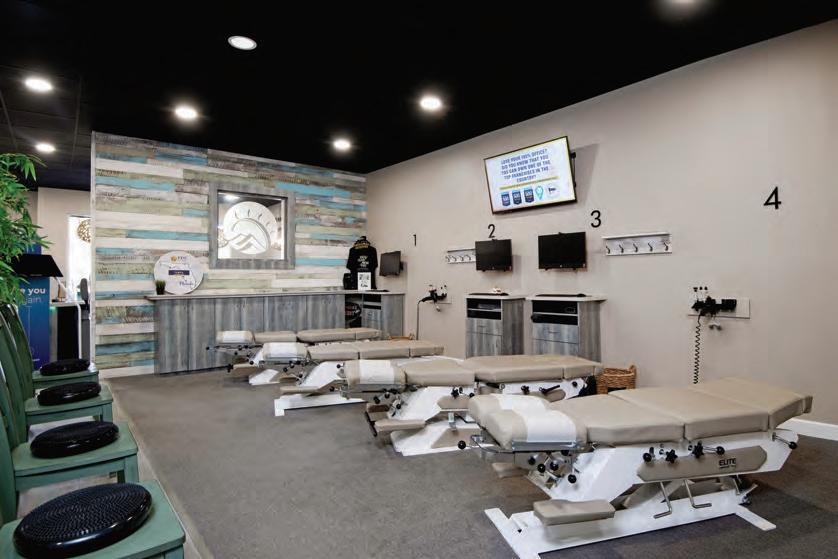

is your friend. It is there to protect you, even if it’s sometimes misguided. And second, if you accept that it’ll always be around, then you can stop wasting time trying to “overcome” or “get rid” of it. Shift your time toward understanding, managing, and (most important) sharing it. Things are much scarier on the inside than they are on the outside! Shine a bright light on your fear. Talk with a friend or write it in a journal. Once you identify your fear, you’re that much closer to owning it.
STEP 3
Act on your fear.
Aristotle believed the cure for fear was to act in virtuous ways, including being courageous. I can tell you from personal experience: He’s right. Action creates further action; momentum creates further momentum. If I feared making sales calls, I made a sales call. If I feared stepping on a stage, I did just that. After one step, we start building the confidence and the courage to take the next. If I ever hesitated, I started comparing the risk of action against the risk of no action. What would happen now—or in a year?—if I didn’t take action? Is that outcome worse than the risk associated with jumping in and building the life of my dreams? I’d rather have an ocean of fear than a mountain of regret.
STEP 4
Repeat.
This isn’t a recipe for making fear go away but a process for us to feel our fears and move forward. The secret is to learn how to turn your fears into fuel for success. Little by little, you’ll become stronger than your fears—until they no longer have any power.
HOW THESE SIDE HUSTLERS DID IT

LEARN FROM YOUR FEAR
“When I decided to pursue my true desire and build a new professional path as an executive coach, my anxiety was through the roof. I felt like such an impostor. I thought, Whywouldanyonewantto hiremeasacoach?IfItell peopleIamstartingabusiness,theywilllaughatme. But I realized that the only way forward—the only way to create change—is to allow and accept a part of the growth process that is intensely uncomfortable. Instead of trying to ignore my feelings of fear, I started paying attention to them. When I noticed my own self-sabotaging thoughts, I’d work to replace them with more encouraging ones. I began taking notes of each little success I was creating and giving myself permission to celebrate every one. When I failed (and it still happens today), it allowed me to switch my mindset from ‘I failed’ to ‘I learned something that will help me be better next time.’ I built tolerance for uncomfortable moments— and that’s necessary to become an entrepreneur.”
—SARA KIMELMAN, founder, Reline Coaching

STUDY YOUR OWN SUCCESS
“I’m a graphic designer, an illustrator, and an artist, and I wanted to create a tribute piece to one of my favorite designers, Milton Glaser, who is best known for creating the I Love New York logo. In his career, he created promotional posters for the Catskill Mountains, which are not far from where I live, and it dawned on me that no one was producing modern posters to encourage regional tourism. I created some for the Catskills and started selling them locally and on Etsy. They’ve been a bigger success than I expected, but it’s easy for impostor syndrome to creep in. It’s not even that I’m afraid to put my work out there; my real fear is that I haven’t learned the formula of my success. So now I’m working to understand it, and to learn how to replicate it. After all, I want this to eventually be my hustle, and not just my side hustle. I’m creating new designs, and I’m hoping they will be as much of a success as my Catskills work. But either way, it will be an opportunity to learn something about what customers want, which will make me stronger as I build this brand moving forward.”
—KELLY ANN RAVER, cofounder, Raver Press

DON’T BUILD IN ISOLATION
“I first had the idea for Cure Hydration, a healthy sports drink, when I was training for a triathlon and struggling to recover from my own workouts. I wanted to explore the idea, but I had a full-time job as the director of marketing at Jet.com, and I wasn’t ready to walk away—or jeopardize my position with the company. I was working 50-plus hours a week at my day job and figured I’d need at least 10 weekly hours to develop my side hustle. Instead of doing it in secret, I went to Jet’s legal counsel and asked for permission to work on the idea. She told me there was no issue, as long as I didn’t build the business while I was at the office. With her blessing, I incorporated the business through LegalZoom and got to work at night and on weekends. It gave me the time to validate my idea and see the steps I needed to take to launch the product. When I finally decided to pursue it full-time, I was confident.”
—LAUREN PICASSO, founder and CEO, Cure Hydration




PART 3 START NOW!
How to begin? The answer is so simple that it’ll sound stupid: Make the decision to begin. Everything stems from a commitment to take the first steps. You can make excuses all day, but nearly half of U.S. workers already have a side hustle. They have struggles, too—but they’re pushing ahead. Here are the steps that helped me when I started my first side hustle at my kitchen table more than 20 years ago, when I was broke, inexperienced, and overwhelmed. They can help you, too.

STEP 1
Ask these questions. It’s important to find a side hustle that is a good fit for your skills and lifestyle. Ask yourself:
• How much time can I dedicate to this? Establish this up front and commit to it.
• How much income do I need to make this worthwhile? This isn’t a goal; it’s a reality check. Be realistic about it, write it down, and refer to it often. You’ll want to know if your time is being well-spent.
• What skills do I have that can make this work? Don’t know? Ask a friend what they think you’re good at. Shoot to create a list of three.
STEP 2
Create a structure. Some people hate structure. Maybe they dream of being an entrepreneur so they can escape the structure of their jobs! But I’m telling you:



Structure is freedom. It’s the ground that you build upon. Here’s how to create it:
• Set a goal. I like to make SMART goals—specific, measurable, attainable, relevant, and timely. Each element is critical. You need goals you can work toward and track your progress on. Once you know this, you’ll start to have a sense of what’s required to get there.
• Create a schedule. If you’re committing 10 weekly hours, put them in your calendar and stick to it.
• Find your tools. There are many platforms and services that can help you launch. Take a look at places like Upwork, eBay, Etsy. Start offering your product or service, and learn your marketplace at low risk.
STEP 3
Foster great relationships. When starting anything new, it’s helpful to surround yourself with people who have walked in your shoes—and even bet-
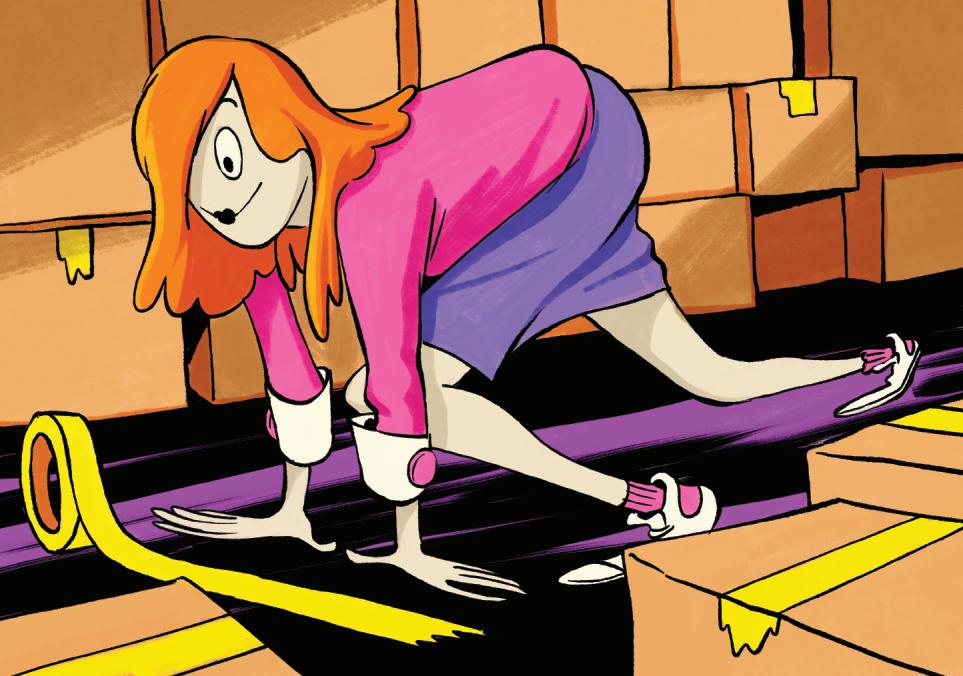
ter if they are a few miles ahead of you! Search for two kinds of people:
• Mentors. A mentor isn’t a job description; you don’t need people who agree to some formalized role. Instead, build a network of mini-mentors—
friends or former colleagues who have expertise and insights.
• Accountability partners. Find someone who’s on a similar path as you, and buddy up. You can help each other stay on track. When you’re your own boss, it’s helpful to keep up with other bosses.
Now comes the most important part: Instead of questioning yourself or waiting for the perfect moment, it’s time to go. Everything that comes next will help you grow.

DOES YOUR CAREER PATH NEED











Leverage your business experience by joining a team of like-minded, former, corporate individuals who are taking control of their destiny. With a Granite Garage Floors® franchise, you can develop your own business with a flexible daily routine and no limitations on income potential. That’s a career makeover in the booming, pandemic-driven home improvement industry that the family will love—that’s Granite Garage Floors.
• R d Ep xy C S v Bu - Affluent Demographic Focus
• Tu k y Sy - Proven Sales & Marketing Strategies + Digital, CRM, & Support
• S p fi d Op - Repeatable Quoting and Installation Process
• L w Ov d M d - High Margins - Average Job Size $3k+
• Id - Solid Business Acumen - Passionate About Customer Service We Upgrade Garage Floors to Look and Last Like Graniteª
OW
HOW THESE SIDE HUSTLERS DID IT

FIND (FREE) MARKETING
“In February 2020, I launched a line of functional chewing gum, made with plant-based vitamins and adaptogens. I don’t come from a family of entrepreneurs, so I didn’t know what being an entrepreneur should look like. I come from an immigrant family, and I’m 40—so my parents were confused about why I would take focus off a well-paying career to
sell chewing gum, and I felt too old to be a carefree entrepreneur. But I developed the product and had to think smart to get it out in the world. I did some Instagram stalking and found a few people with a solid following who I thought might be interested in Mighty Gum. I cold-emailed them and asked if I could send them some product. They said yes, and when they mentioned it on their social channels, the surge we saw in demand was truly surreal. I’d always underestimated the power of partnering with the right influencer, but it was key to our launch.”
—MATHEW THALAKOTUR, founder, Mighty Gum

DRAW FROM EXPERIENCE
“Just before I graduated college, a part-time consulting gig made me aware of the completely underserved market of tattoo aftercare. I wanted to create a brand to fill that gap, and I brought the idea to my partner, Selom Agbitor. We’d worked together before, drop-shipping women’s swimsuits out of my apartment, and had learned a lot about operating without the hassle of inventory
and creating reliable branding and customer service. Now we felt equipped to take on a bigger project. We formulated our product, spent $600 on ad spend, and recruited our neighbors to help us with fulfillment as orders started to roll in. Our goal was to grow fast enough that we could afford to hire manufacturers by the time we graduated—we’d both accepted full-time jobs, after all. That initial $600 proved money well-spent—it got us off the ground, and from there, orders were reliable enough that we could continue funding increasingly large ingredient purchases and boosting ad spend.”
—OLIVER ZAK, cofounder, Mad Rabbit Tattoo
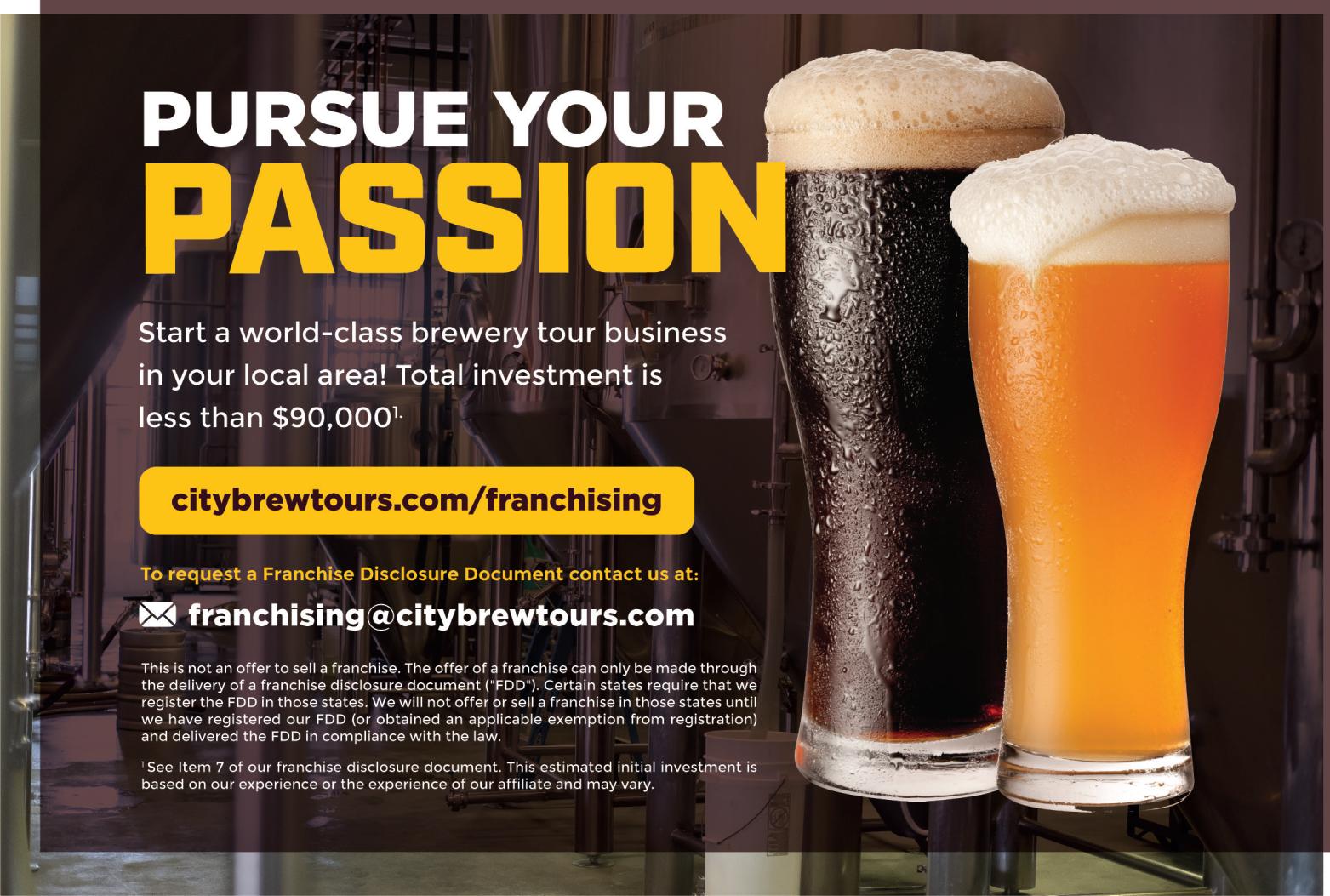


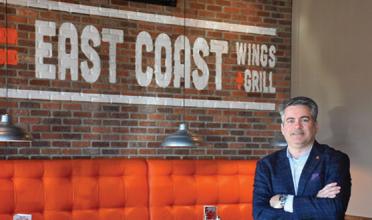
TEST YOUR PRODUCT

“During lockdown, I was the conference ambassador for the virtual Women Tech Global Conference 2020. I interviewed the speakers and, after the event, posted the conversations on YouTube. I got so much great feedback, I realized that I could share even more great insight with my community by launching a series in which I interviewed smart leaders on a regular basis. This was a big experiment, so I didn’t want to invest any money at first. Because of that, I eliminated podcasts as an option. Then I realized that a video podcast could be shared on YouTube, which would allow me to analyze feedback— for free. Once it gained momentum, I felt more comfortable investing in webcams, lights, and a proper microphone. Now the series, called Personal Branding for Professionals, is growing—and my future plans include a traditional podcast.”
—KETAKI VAIDYA, host, Personal Branding for Professionals

• Side Door Revenue: Carry-Out, Curbside, 3rd Party Delivery

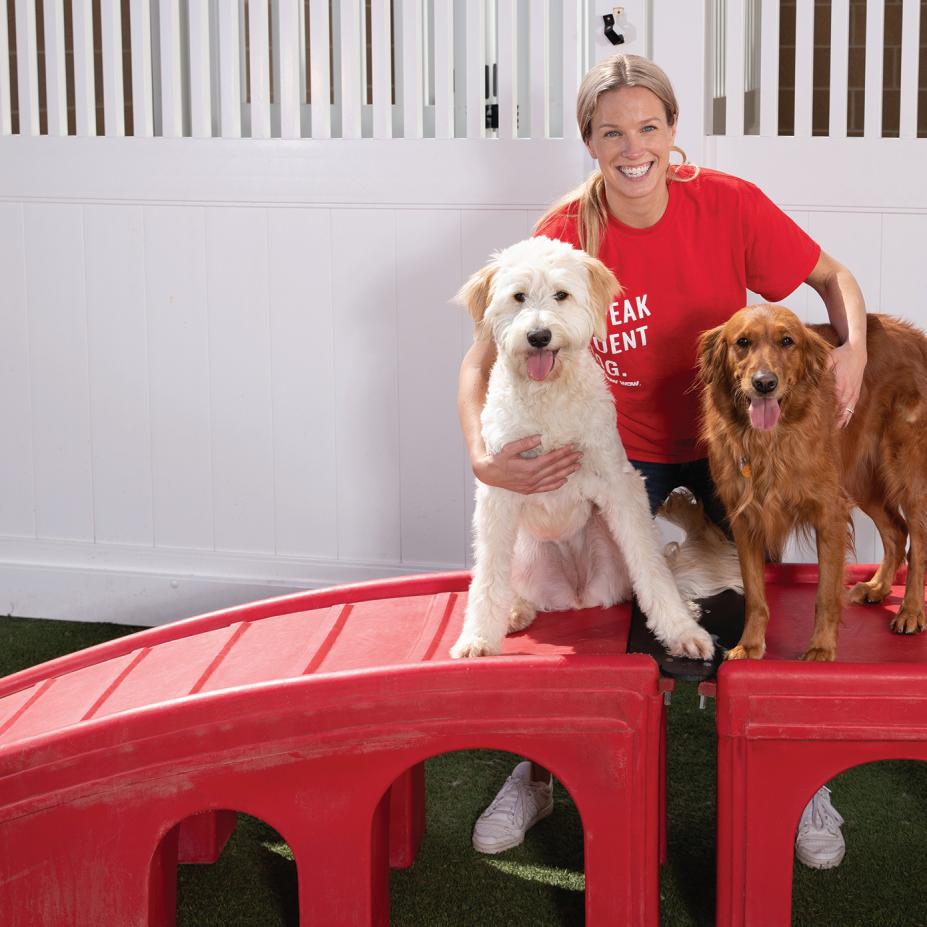

DESKS THAT KILL ZOOM FATIGUE?
Another workday at home getting you down? A new line of desks will help you up— and help you maintain focus. by
CHYELLE DVORAK

A sit-stand desk from Vari offers workday flexibility.
Yasmeen Tadia once used an upsidedown box as a makeshift standing desk. But as her company grew—her gourmet cotton candy business, Make Your Life Sweeter, now serves the likes of Facebook, Lyft, and Laura Mercier—she felt it was time to upgrade her workstation. So she bought a desk from the manufacturer Vari, which moves into sitting or standing positions at the touch of a button.
The cost for this new luxury: $650. “But it was totally worth it,” says Tadia. She says she feels physically better every day, and the setup looks a lot nicer than that old box. As the pandemic shifted people into their home offices, it shifted the desk industry as well. Standing desks (also often called “sit-stand desks”) have been around for decades, of course, but have made a
others added customizable features, like adjusting the height through your phone.
Entrepreneurs may buy desks for themselves, but plenty are also making these desks a new kind of employee perk. “Whether it’s a stipend, reimbursement, or making the purchase altogether, businesses want to provide a sit-stand desk for their employees’
working posture is critical for both physical and mental health,” says L. Casey Chosewood, MD, MPH, director of the National Institute for Occupational Safety and Health’s Office for Total Worker Health. He says that as workers move around, they gain more energy and focus.
To see what all the fuss was about, I tried a Range desk from OFS. I started in a seated position and pressed the arrows to bring the desk to my perfect height (28 inches). When my foot fell asleep after 30 minutes, I changed to standing. Then I kept going back and forth, and I noticed that I had much more focus than I’d ever had before.
Tadia experienced something similar—which is why she got desks for her team, too.
RISE WITH YOUR DESK

OFS Range
Cost $783 to $799
Best Feature A durable scratch-resistant finish protects your desk from wear and tear around the house.



THE RISE OF THE SMART BOARD
Miss having in-person meetings in front of whiteboards? Now you can replicate them remotely. by
CHYELLE DVORAK

When Peter Handy meets virtually with customers, video chat just won’t do. He runs Bristol Seafood, an upscale fish-supply startup, and wants to wow them with new fillet cuts and food presentations.
So instead of sitting at a computer, Handy stands in front of a 55-inch “smart board.” It’s called a Vibe, and it’s a little like those election-night touchscreens you see on CNN. But the Vibe is made for collaboration; it functions like a whiteboard but also integrates with platforms like Zoom, making it easy to see other chat participants, share your screen, work together on sketches, share files, annotate documents, and more. “It’s all about how you can make your business stand out right
now,” says Handy.
As entrepreneurs try to improve their businesses remotely, a new industry of smart boards is rising to the occasion. They vary widely in cost and complexity—ranging from a cool $9,000 for Microsoft’s Surface Hub 2S 50-inch down to $599 for DTEN’s 27-inch Zoom for Home whiteboard. (Vibe is $2,999.) Less technical solutions are also available, like Rocketbook’s $15 Beacon clips, which digitize drawings from actual whiteboards.
But the appeal goes beyond just wowing a client. It’s about basic psychology, says Mike Feibus, principal analyst at the market research firm FeibusTech. “Comprehension and retention are both better when you handwrite some thing,” he says. Writing ideas can foster artistic expression and ideation, and leads to better brainstorming.
Carolina Milanesi, analyst at Creative Strategies, has found other benefits, too. She uses Microsoft’s Surface Hub 2S 50-inch. “For me, it’s the real estate of the screen,” she says. “I prefer to work while standing up. It’s a unique experience when I can step back and see my project spread out in front of me.”
A BEVY OF BOARDS

Microsoft Surface Hub 2S 50-Inch
Cost $9,000
Best Feature This monster screen works on a Windows 10 operating system, making it just as powerful as a computer.
To try one myself, I ordered a Vibe. Its stand took about 10 minutes to assemble, which was easy enough—though I needed help lifting the screen onto it. A colleague then picked up Vibe’s pen and mapped out his weekly schedule on the screen. “I could use this for hours,” he said. I had to agree.
Is a smart board destined for every home office? Maybe—but probably not until prices drop. These are premium products; the Vibe’s stand, for exam ple, adds an extra $500. But experts say that, just like tablets once did, this new tech will become more affordable over time. Until then, they’ll benefit those who can afford them. “You have to provide really good service and relationshipbuilding opportunities with your customers,” says Handy, the fish supplier. That’s worth more than $2,999 to him.

Cost $2,199
Best Feature
Bluetooth allows you to connect to an external

DTEN’s 27-Inch Zoom for Home
Cost $599
Best Feature
Eight microphones, three wide-angle cameras, and stereo speakers take your Zoom experience to the next level.
The Vibe smart board in a promotional demo.


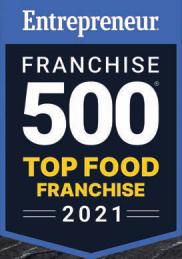
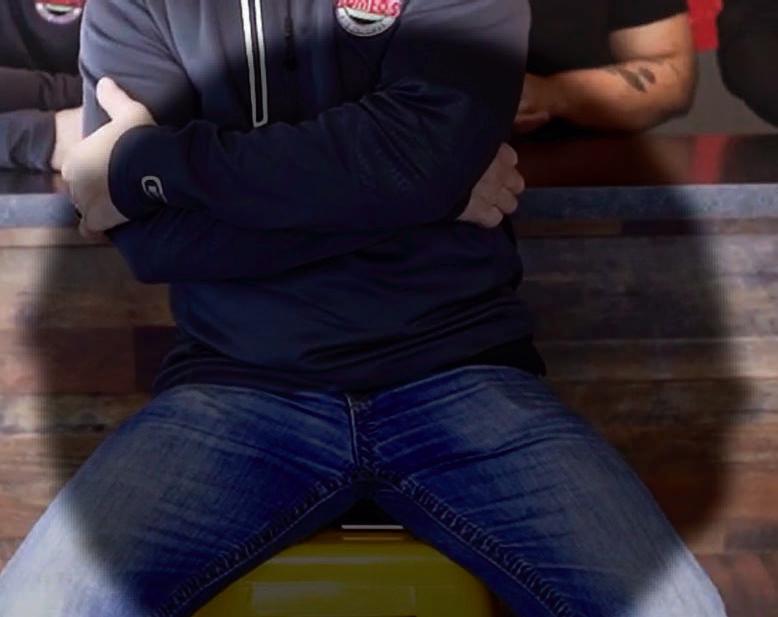





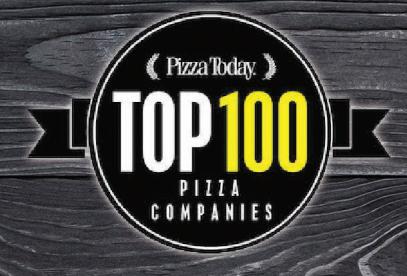


FIVE
HIS WORST FIVE YEARS WERE HIS LIFE’S BEST GIFT
What is it like to build a hit business and then lose all control? Oded Brenner, the founder of
by
has a lot to say about that. by
Max Brenner: Chocolate
the Bald Man
FRANCES DODDS
PHOTOGRAPH BY M. COOPER

For chocolate lovers, the name Max Brenner conjures the image of a bald man. But few may know who that bald man is—or how much this brand hurt and taught him. Here’s the short of it: Max Brenner is a restaurant and retail shop with 50-plus locations worldwide that sells delights like a fondue tower or a chocolate pizza. Its tagline is “Chocolate by the bald man,” and its logo is an illustration of…a bald man. Is it Max Brenner? Not quite. The founder is a bald Israeli man named Oded Brenner (Max was his original business partner), who created his first shop in the small town of Ra’anana 25 years ago, and eventually sold it to the Israeli food conglomerate Strauss Group. But when Brenner started a separate café chain with what he says was Strauss’s blessing, the parent company sued him for breach of contract. He went broke fighting the lawsuit, and was banned from creating anything chocolate-related or putting his name or face on any brand for five years. (Strauss did not respond to Entrepreneur’s request for comment.) Here, Brenner opens up about how he came to view that devastating time in exile as a once-in-a-lifetime opportunity.
You built Max Brenner into a hit. Why’d you sell it?
Maybe three years in, if I was making money, it was for sure not enough to continue. I had to bring on a partner. Strauss was the largest food corporation in Israel. They gave me a very nice salary, bonuses, consulting fees, and a little bit of royalties but left me with 3.5 percent equity. I convinced myself that it would eventually be a billion-dollar company and my 3.5 percent could be $35 million. But to be honest with you, I was also so in love with my own creation that I wasn’t thinking rationally. I was addicted—in a good way—to the food, to the love, to the applause. [Strauss] gave me the impression that there was no brand without me.
What was it like going from running your company to being part of a corporation?
I don’t want to generalize, but usually, an entrepreneur is a very impulsive, gut-instinct person. He has
crazy passion, like a fire. He wants to see things happen right now. The corporate process is “Let’s think about it. Analytics? Why this packaging?” It’s endless.
How did your relationship with the corporate Max Brenner team start to sour?
For a very long time, bitterness and frustration were building up. Eventually, I decided that I wanted to start a new concept, like a Starbucks of chocolate— smaller stores, self-service, quick-serve. It was called Little Brown. I pitched it to Max Brenner and they weren’t interested, so I told them, “I think it’s not in competition with Max Brenner.” They said, “No problem.” So I opened one on New York’s Upper East Side, and then I had a franchise in Russia and one in Dubai, and I leased another store in Chelsea. One day the chairman of Max Brenner came to me and told me, “I don’t think it’s working between us. We should split.” I told him, “No problem.” Then he said,
“You need to stop doing this and this and this in Little Brown.” I said, “I cannot; I already have franchisees, and you know you’re jeopardizing my concept.” He didn’t say anything much. Then one Friday afternoon, somebody knocked on the door and said, “You’re being served.”
What was the legal battle like?
You just don’t think that a $3 billion corporate company is going to smash you, but that’s what happened. It was a very short and aggressive fight. We went to court, and the judge said, “You should settle.” I had not a drop of energy to continue fighting—not a dime left in my pocket. I just wanted it to finish. So I gave up on everything. The five-year non-compete was part of the settlement.
You had to really change your lifestyle after losing the court battle. What was that like?
I had lived a very comfortable life in Manhattan, and
I moved my family to a small house in Jersey. I had to call friends and ask for help. It’s not pleasant when you were the big shot who gave job interviews, and now you need to do job interviews or ask friends to hire you for consulting work. I thought, I’m the bald man, Max Brenner; everybody needs my advice! But nobody was waiting for the bald man. For a selfmade man who was the boss, becoming an employee is devastating. I told myself, This is another stage in the journey I need to go through.
In 2018, after the non-compete ended, you opened a new café in New York called Blue Stripes, which is based around healthier treats and the “superfood” benefits of cacao. How is it different from Max Brenner?
Max Brenner was a phenomenal brand. But what I’m doing today is much more beautiful in terms of both creativity and meaningful message. When you see what’s going on around the world—climate change, pollution, the gap between the rich and other countries—it feels like, finally, here is a small way that I, with my 25 years of experience, can do something to make a change. And all of this came about because of those five years of hell.
What advice do you have for entrepreneurs who need to bring on partners for their company to survive?
Don’t give up control. Be extremely tough in the negotiation. If people really want your brand, they will give in
eventually. If not, they’re not the right partners. In the earliest stages of entrepreneurship, you need to have control in decisionmaking—even if you are kind of diluted in your financial equity, because sometimes somebody’s putting a lot of money in. If you’re not going to have the control, it’s not going to be your company.
What do you know now about pulling yourself up from rock bottom?
At a certain point, you just want to collapse. You’re angry at the world, angry at God, angry at everyone. You ask, How could this happen to me? Even though you know that part of it is probably your fault. But hopefully—and this is what I told myself—this is a onetime experience. I would say it even stronger: This is a one-time opportunity. Hell has benefits. It has benefits on your ego, and ego is a very destructive element in our personalities. Hell has benefits in the way you talk to other people and how you think about business. Mostly, hell makes you think a lot. It can change your personality. It is not there coincidentally, and this may sound maybe a little bit too spiritual and mystical, but I would say listen to it carefully. Give it all the room and time it needs. Feel sorry for yourself; be angry. But use this period to build yourself for the next stage in your life, which can be unbelievable. If you are creative, if you are a true entrepreneur, you will be able to come back and do it again, and the next thing will be better.










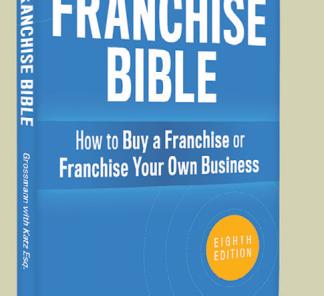

YEAR BE
THIS YEAR WILL BE GREAT. REALLY
After months of forced closures and record-high unemployment in 2020, the U.S. is ready for an economic recovery—and the franchise industry is uniquely positioned to lead the charge.
by MARK SIEBERT

was troubled, as we all were, by the staggering number of business closures and job losses brought on by COVID-19. But as a franchise industry consultant with 35 years in the franchise industry, I remain optimistic about the months ahead. Historic access to labor, real estate, and capital have created an environment extremely favorable to franchise growth, and shifting social and cultural norms will create opportunities for new concepts to expand quickly. All factors considered, I’m predicting this to be the best year of franchise growth in at least a decade. Let’s take each market force in turn.
At the end of March 2021, the unemployment rate was at 6 percent. That’s a significant improvement over the worst of the pandemic, but it’s still higher than where it was at the beginning of 2020. And when still relatively large numbers of people are looking for work, franchise systems have an easier time building a strong workforce. But what’s unique to this specific downturn is that in addition to low-cost laborers, it freed up many seasoned career professionals.
Many of the people currently looking for work have management experience and technology skills, and they’re accustomed to life at the top end of the salary range. These are people who want to be in business for themselves, but at this point in their careers, they might not want to build something from scratch. With labor what it is, it should come as no surprise that the franchise industry has experienced strong lead generation throughout the pandemic. And I expect that many more
franchisees will emerge in the coming months. Those who have been waiting for a bright light at the end of the COVID-19 tunnel, or those kept afloat by government programs, are realizing that they can no longer stand on the sidelines waiting for a return to the way things were pre-pandemic. These entrepreneurs are looking for new ways to secure their future and be their own bosses, and with franchising, they’ll find a direct path to reach those goals.
Now what about ensuring these prospective franchise owners are financially qualified? In normal times, many interested parties fail to secure the cash they need to go into business for themselves, but in the coming months, that will be less of a problem. When entrepreneurs consider opening their own franchise operations, they’ll find capital easy to come by. The stock market has been on a 10-year run, and many Americans have acquired serious wealth in the form of home equity. And in late April, the
Federal Reserve signaled that interest rates would remain close to zero.
With qualified, financed franchisees appearing in droves, the next challenge will be to find viable real estate for franchise expansion. That will also prove to be easier than ever. The sad truth is that the recent economic downturn forced a huge number of businesses to vacate. There have been more than 110,000 closures in the restaurant industry alone, and many of those will be neighborhood joints and mom-and-pops. Franchisees that require a brickand-mortar presence will find a good selection of empty shells in prime locations, and the bargain prices will make it even easier to secure bank financing.
I should be careful here not to downplay the importance of sound and sober strategy. Yes, we’re seeing the signs of a major franchise boom, but the factors that doomed businesses before COVID-19 will continue to pose challenges. Poor planning, careless management, bad locations, and limited vision can sink a company just as quickly as ever. Franchise brands looking to ride the growth wave will need to have strong systems in place.
To prepare now, and to begin recruiting reliable investors, franchisors should run a full evaluation on strategic planning, operations documentation, site selection, marketing, and franchisee messaging. Recruitment messaging should explain how the franchisor supported its franchisees and adapted operations during one of the most difficult
periods on record, and management should be candid about addressing shortcomings and offering examples of improvement within the system. It won’t be enough to simply generate leads. You’ll need to demonstrate real franchisee success as well.
Might the full extent of the boom I envision be delayed further into 2021, or beyond? Of course. Even with the wide availability of vaccines, if U.S. businesses are not able to fully open up for business, then franchises might not be able to take complete advantage of the otherwise favorable conditions. In that case, opportunity for growth will still exist, but it will go to a narrower group of companies that are better suited for current realities (or “the new normal”). I’m thinking about one-on-one and other services that don’t rely on congregating large groups of people to survive. But in time, the growth will come. The franchises that benefit the most will be those that enter the arena with strong franchise operations and an expansion strategy that allows for aggressive action. It’s always important to have a healthy system in place to deliver positive returns for both the franchisor and franchisee, but failing to do so now could result in missing out on a once-in-a-lifetime growth opportunity.
Mark Siebert is the CEO of iFranchise Group and author of Franchise Your Business: The Guide to Employing the Greatest Growth Strategy Ever and The Franchisee Handbook.
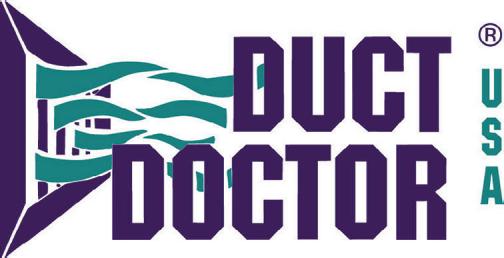


ONE RESTAURANT, EIGHT BRANDS
To boost sales during the pandemic, the founders of Dog Haus flooded the delivery apps with virtual restaurants that operate out of existing franchise kitchens. They’ve been so valuable that they’re now here to stay. by CLINT CARTER

When Dog Haus launched in 2010, its concept made a lot of sense…for the year 2010. Its mission was to elevate stadium food into culinary masterwork, and it did so by selling dogs and sausages decorated with ingredients such as bacon, pastrami, caramelized onions, and arugula. The three founders, Hagop Giragossian, Quasim Riaz, and André Vener, dubbed their concept “craft casual,” and they built fun, large, airy venues to serve customers. Dog Haus has grown to 48 locations since franchising.
But in the decade since, much has changed with how Americans eat. People increasingly order food through Grubhub or Uber Eats. Dog Haus responded by expanding its reach through ghost kitchens—delivery-only facilities with no seating, parking, or signs. Then, when the pandemic hit, foot traffic dropped even more—and the ghost kitchens presented an intriguing opportunity. If Dog Haus could sell food without a dine-in location, why did its founders have to stick to just selling Dog Haus–branded food? Couldn’t they sell, well, anything?
Last March, the three Dog Haus founders put that question to the test by announcing an ambitious roster of brands: It’s called The Absolute Brands, and it consists of seven new QSR concepts (five are open and two more are in the works) that have no physical stores and operate out of virtual kitchens and existing Dog Haus locations. (After all, Dog Haus kitchens suddenly had excess capacity.) If a customer orders from any of these brands—such as Huevos Dias, Bad-Ass Breakfast Burritos, or the plant-based concept Plant B—they most likely won’t even know the food is made in a Dog Haus kitchen (unless they happen to go and pick it up).
The three founders recently sat down with Entrepreneur to explain how The Absolute Brands works.
It sounds exhausting to launch multiple restaurants during a pandemic. How were you able to do it so quickly?
GIRAGOSSIAN: We began testing The Absolute Brands last January, before COVID. At first we thought we’d just run them from the ghost kitchens, but when the pandemic happened, we thought they could be a lifeline for franchisees. The brands weren’t fully ready to launch at the time, but we thought that if the franchisees were down, we could figure it out as we go. And they jumped at the opportunity.
But how? Is it really that easy to run eight restaurants from one kitchen?
G: It’s been fairly seamless, actually. We started with just three concepts, and we’ve been rolling out the others since. These concepts require no vendors, no new kitchen equipment, and zero capital expenditure from franchisees. As far as products go, we only added two or three things—like a tortilla, for example, to wrap the burritos. We changed some of the packaging so we’re not sending out everything with Dog Haus branding, but aside from that, everything is consistent with what franchisees were already doing.
Instead of launching new restaurants, why not just add more items to your existing Dog Haus menu? Wouldn’t
that be easier?
RIAZ: People aren’t necessarily searching by brand on the delivery service providers [DSPs]. They’re searching what they want to eat.
VENER: For example, if you walk into a Dog Haus, you’ll see on the menu board that in addition to dogs and sausages, we have burgers, a chicken sandwich, and plant-based products. But if you’re craving a chicken sandwich and you go to a DSP, you might scroll over Dog Haus. You might type in “chicken sandwich,” and we won’t show up high on the queue. So we pulled out our chicken sandwich, Bad Mutha Clucka, and added some of the LTOs we’ve created—like chicken wings for March Madness and the Super Bowl. Now we have a brand called Bad Mutha Clucka, and when people search for “chicken,” it pops up first.
G: Plus, multiple brands allow our franchisees to be flexible. They can turn these virtual concepts on and off as needed to fill out day parts.
Wait—you can just turn off a restaurant?
R: That’s the beauty of this. If somebody wants to turn off Bad-Ass Breakfast Burritos during a highvolume time of the day when they need more grill space for burgers, they can do that.
V: And when a brand is turned off, it’s gone from the DSP platform. It doesn’t say “closed.” It just doesn’t show up in the search.
FRANCHISE Innovation

It’s notable that some of The Absolute Brands are in direct competition with each other. The obvious example is Bad-Ass Breakfast Burritos and Huevos Dias, which are both breakfast concepts. How concerned are you with the success of any of these brands on an individual level?
R: I’d rather have us compete with us than compete with somebody else. Effectively what we’ve done is allow our operators to run eight different restaurants within the same four walls. So they’ve got a leg up on the competition.
V: As long as we’re collecting dollars to fill up the
total sales for the day, we don’t care if one brand is 25 percent and another is 10 percent. If there comes a point down the line where eight brands just isn’t working for some reason, we could either fold some of the items from one into another or cancel it and create an entirely new brand. We could close something overnight and launch something new the next day.
There’s a potential for confusion with multiple brands operating under one roof. Someone could order from Plant B, and when they type in the address, their GPS takes them to Dog Haus. Has that been an issue?
R: Sure, sometimes drivers are confused when they come in for pickup, but they learn. It’s important for us to have The Absolute Brands live in a virtual space. Dog Haus will always be our first priority, and we don’t want to have all the other brands’ signage on the windows or doors.
V: That confusion can also create excitement. When our fans order from BadAss Breakfast Burritos and pull into Dog Haus, they’re like, “Wait—are you guys doing burritos now?” Once we explain that it’s delivery only, they go off telling their friends about it.
I’m sure it’s hard to compare pre- and post-pandemic numbers, but what
can you say about The Absolute Brands’
At least 25 percent of our sales are coming from The Absolute Brands right now, and our same-store sales from Q3 are up double digits over 2019. And that’s despite most of our dining rooms being shut down.
I don’t think we’re embarrassed to say this, but one of our restaurants has been struggling since it opened in 2018. We didn’t know why. It has a great operator and a great location, in Chicago’s Lincoln Park. But at the end of 2019, the franchisee was like, “I don’t think I’m going to make it.” Then the pandemic hit, and he started serving The Absolute Brands. Since then, he has tripled his sales. So maybe Dog Haus wasn’t going to survive in Lincoln Park, but Bad Mutha Clucka and Bad-Ass Breakfast Burritos do really well.
V: The Lincoln Park location went from being in the bottom three stores to the top three. The franchisee recently opened up two more locations in the Chicago area.
Have you discussed what will happen if one of these brands turns out to be a huge hit? Would you turn it into its own franchise?
G: We’d love that problem. We’re either going to be able to peel off some of these concepts and do them on their own or just let them solve for the fact that not everything works in every location.
Dog Haus founders (from left) Giragossian, Vener, and Riaz at HQ in 2019.






Unique
State
Unlimited
Protected
AREADY FOR A BIG RETURN
The end of the pandemic is in sight, and many franchises are anticipating an explosion in business. Leaders at four franchises share how their brands are working overtime to prepare for the rush and win back coveted business.
by STEPHANIE SCHOMER

DOGTOPIA PREPARES FOR PANDEMIC PUPS
“FOR A DOG, the pandemic has been the best thing,” says Neil Gill, president and CEO of Dogtopia. When offices shuttered and employees shifted to working from home, pups enjoyed spending ample time with their owners. As a result, the dog daycare, boarding, and grooming franchise saw sales plummet by 80 percent in April 2020 alone. But in the long run, Gill sees a very different trend: The pandemic may ultimately be a great thing for his industry.
“Most organizations miss the signs of a tipping point, but that’s because a tipping point isn’t one single event— it’s a series of events,” he says. As he sees it, here are the factors combining for a doggy business boom.
First, the pendulum already swung back his way. Within weeks of lockdowns beginning in spring of 2020,
some customers started to return to his business, which was deemed essential. (Juggling work and kids and a dog, after all, is no day at the park.)
Then came what Gill calls the “puppy binge.” Adoption rates rose 40 percent during the pandemic, and 76 percent of millennials now own a pet—and more than half of those own a dog. What will happen to those dogs when the world opens back up? New dog owners will need a place to send them—and because Gill anticipates a pent-up desire to spend money (not to mention, for many, padded savings accounts from a year at home), he thinks pet parents will be happy to invest in great solutions. Beyond that, the vaccine-rollout plan is helping consumers feel comfortable planning ahead—so he is seeing rising interest in Dogtopia.
All of this means Gill is bracing for a business boost. “Our world won’t switch back on as fast as it
switched off, but it will be a gradual, steady increase,” he says. “We need to be ready.”
To help his franchisees prepare, he’s created a pandemic-boom list, with six areas of focus and actionable advice for owners.
1 Boost marketing and brand awareness.
With so many new dog parents out there, now is the time to win their business. “We’re making sure franchisees are planning events, pursuing new local partnerships, really getting back out in their communities, and bringing new pups into daycare,” Gill says.
2 Strengthen store leadership.
Last year, Dogtopia created training for three in-store positions: general manager, pet-parent relationships manager, and canine coach. Additionally, it’s tracking customer retention and encouraging franchisees to be proactive. “If you see attrition, reach out to pet
parents and ask them why,” Gill says.
3 Retrain.
“If you have a team that can’t manage being busy, the seams start to split,” Gill says. Individual locations are encouraged to retrain staffers on daily tasks and priorities.
4 Review pricing strategies.
The pandemic changed Dogtopia’s business, likely forever. Years ago, boarding made up 50 percent of revenue, with daycare and grooming fees rounding out the other half. But today, daycare is around 70 percent of the brand’s business. Franchisees are being encouraged to review their existing pricing models, and the corporate office is creating its own suggested updates.
5 Update cleaning protocols.
Customers will want to know that any business is clean—and as store traffic ticks back up, that will require more attention and more supplies. Franchisees, Gill says, should make sure they have the equipment they need and prepare to adjust orders.
6 Determine additional equipment needs. Extra dogs means extra work. Anticipating a need for additional washers or dryers will help franchisees stay ahead of the game.
“It’s all fundamental, basic stuff,” Gill says of his prescribed advice. “But if you don’t see the wave coming at you, you can be washed over by it.”

PAINTING WITH A TWIST EXPANDS ITS REACH—AND HOURS
PAINTING AND drinking wine in a small studio with a bunch of strangers isn’t exactly a pandemic-friendly activity—but it was once Painting with a Twist’s entire business model. When the franchise’s 300-plus stores temporarily closed last year, its franchisees were desperate to maintain a connection with customers. They worked with the corporate office to quickly launch Twist at Home paint kits and instructional videos. These were a fast hit with longtime customers—and even helped attract a few new enthusiasts.
Now, the franchise thinks, these kits may serve a longer-term purpose, too: a new, lasting revenue stream.
“We received a number of emails expressing excitement, saying things like, ‘I never have time to come to an event,’ or ‘I have really bad social anxiety and don’t feel comfortable in large social settings,’ ” says Katherine LeBlanc, Painting
with a Twist’s CMO. “By summer, it was clear that a large percentage of people purchasing Twist at Home kits were people who hadn’t participated in our brand.”
In fact, roughly 30 percent of all Twist at Home purchases have been made by first-time customers, and 50 percent of all traffic to the Painting with a Twist website was from uninitiated consumers. That unexpected customer acquisition, coupled with pent-up consumer desire to leave the house, now has Painting with a Twist working overtime to make sure its franchisees can capitalize on an increase in post-pandemic business.
“We’re really projecting an increase in in-person events, and we’re stressing to franchisees that they’ve got to build a buffer into their preparedness,” says CEO Joe Lewis. “Reach out to vendors, and make sure you have the supplies you need now, as well as access to the supplies you may need for an increase in demand.” The company is also launching new programming like a late-night class from 9 to 10 p.m. “That will suit younger groups and prevent crowding in in-demand
earlier classes,” says Lewis.
Part of preparing for the expected surge ahead includes relying on its own community of franchisees to guide the business through recovery and help other owners seize opportunities as the pandemic draws to a close. “We’ve introduced a new peer-sharing program called Focus4, a biweekly meeting where our franchisees share their wins and their roadblocks, and create a roundtable discussion that will ultimately help them prepare for reopening,” LeBlanc says. “Florida, for example, will likely open up faster than California. So those California franchisees can learn a lot about what to expect from our Florida franchisees.”
To continue providing the carefree escape that it’s known for, Painting with a Twist will also continue to sell its Twist at Home kits, which now account for about 10 percent of all sales. “Our secret sauce isn’t about helping people paint—that’s something anyone can do on their own time,” LeBlanc says. “Our secret sauce is delivering art in an empowered setting that’s fun. We’re getting in position to deliver that to more people than ever before.”
CYCLEBAR RACES TO WIN OVER PELOTON FANS
IN THE SUMMER of 2020, CycleBar was looking to hire a chief marketing officer. When it asked Dawn Weiss if she was interested, she laughed. “I told the company that I have a Peloton, and I was like, ‘CycleBar is toast!’ ” says Weiss. Peloton’s at-home fitness equipment and streaming classes had soared during the pandemic. She assumed CycleBar could never compete.
Then she learned that many CycleBar employees also have Pelotons—as do many of its customers. “When I started doing my due diligence, I realized that Peloton had indoctrinated people into cycling,” says Weiss, who ultimately took the job. Instead of being competition, Peloton was actually creating new potential CycleBar customers.
After the pandemic, CycleBar will be able to capitalize on a benefit Peloton doesn’t offer outside of New York City: in-person classes. The majority of CycleBar’s studios were able to stay open through the pandemic at limited capacity. As

























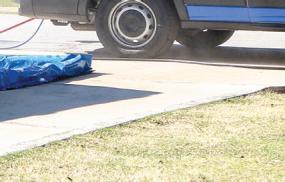








FRANCHISE
restrictions lift, the brand can accommodate far more customers—old and new— eager to sweat in a group.
“Now the question is, how motivated can you stay working out alone?” Weiss says. “It would be foolish for us to think that we’re going to sell a month of unlimited rides to someone who has invested in a Peloton. We’re not asking them to abandon their bike at home—but they can come in to see us four or eight times a month and see what they get out of a group environment.”
Already, CycleBar’s classes (at about 60 percent capacity) are waitlisted nationwide. In a recent marketing case study, CycleBar tested the tagline “Riding Alone Sucks” on a targeted audience of people who work out at home. It found that 81 percent of them would be interested in potentially joining a CycleBar class.

In an aggressively competitive market, CycleBar wants to offer more variety—and soon, more classes. “We’re supporting additional online bootcamps to train instructors virtually, which will help our franchisees remain agile and be ready to meet demand when we can,” says Weiss.
That demand stretches beyond consumers. CycleBar is currently hosting virtual confirmation days on a weekly basis, and is anticipating a surge in new franchisees. “Folks are reevaluating their lives and livelihood,” Weiss says. “CycleBar’s success through the pandemic has set us up for a big increase in franchise sales.”
HANSEL LYNN had no interest in taking his business virtual. He is the founder and CEO of the Coder School, which teaches coding to kids at 50-plus locations and offers one-on-one, in-person training. “We had discussed offering virtual classes but were worried it would create unnecessary and confusing competition between locations,” he says. But then the pandemic changed that calculation. “When we had to, we realized how easily our offering translated.”
Last spring, Lynn (pictured, left, with co-owner Wayne Teng) took his cues from schools. “The same way education became digital, our best practice was to simply tell parents that all our classes would now be virtual,” he says. “No shift in model or pricing.” That change not only sustained the business but also engaged a new audience of customers who he expects will stick with the
activities that are more than 15 minutes away—about five to seven miles from home. “Once we started going virtual, kids who lived 20 miles from our locations were signing up,” he says. “It helped franchisees find a new market.”
As he prepares for a full reopening, Lynn expects that some of those customers will now trek to an in-person program, in addition to brand-new students who will join for the first time. To accommodate the influx of new in-person customers, the Coder School is paying close attention to staffing needs and encouraging franchisees to prioritize hiring.
“We’re expecting a gradual return to normal— we don’t think that all of a sudden everyone will rush in one day,” he says. (A hybrid offering of in-person and virtual classes will remain.) “But the best part of our model has always been that it can flex based on demand, which will be
sees are already trained to respond: The bigger you get, the more you hire.”
Lynn is also taking advantage of increased momentum and thinking of new ways to expand the Coder School’s offerings and serve a wider variety of clients’ needs. “We’re starting an e-sports league within our schools,” Lynn says. “It will be a regimented program with training, structure, and games, and there will be a Super Bowl at the end.”
He plans to launch the program when in-person instruction is back in full force, and sees it as a way to further boost the brand’s anticipated recovery and appeal to parents and kids who are on the hunt for new activities, even beyond their usual Coder School classes. “It will be a completely separate revenue driver,” Lynn says. “It will help us come back strong.”
Stephanie Schomer is the editor in chief of Employee Benefit News.


THE 10 HOTTEST THINGS IN FRANCHISING
Our prediction of this year’s hottest franchise categories—and a list of the brands in each.
Compiled by TRACY STAPP HEROLD
Every year, we try to predict which franchise types will be the most successful in the year ahead. In normal times, that involves looking back at the past year and learning from the trends we find. But of course, the past year wasn’t a normal one. The events of 2020 have largely shifted the question of “What’s popular?” to the question of “What’s essential?”
That question has led to some big changes on this annual list. We’ve included several categories that haven’t appeared here for years, including automotive services, cleaning and restoration, home improvement, tech services, and tutoring—all of which were largely deemed essential during shutdowns in 2020, or were able to quickly pivot their models to keep doing business. But you’ll also find categories from last year’s list whose strength has only been cemented this year, such as health and pets. And although this was a challenging year for restaurants, we still predict a positive 2021 for three food categories: chicken, pizza, and fruit drinks and snacks.
All in all, there are 402 franchises listed in these trending categories on the following pages. Please keep in mind that this list is not a recommendation of any particular franchise. A strong category does not guarantee a strong franchise, and there are many other factors to consider when you do your own research to find the opportunity that’s right for you. Always read the company’s legal documents, consult with an attorney and an accountant, and talk to current and former franchisees before you make a decision.
AUTOMOTIVE SERVICES
During COVID-19 shutdowns, most auto repair businesses were able to stay open as essential businesses. The demand for repairs, maintenance, and other automotive services— including mobile services that come to the customer— should stay strong well beyond the pandemic as more and more car owners seek to keep their vehicles on the road longer.
AAMCO Transmissions and Total Car Care
Transmission and general auto repairs, diagnostic services
STARTUP COST
$223.6K–$330.5K
TOTAL UNITS
(FRANCHISED / CO.-OWNED) 556/13
Advanced Maintenance
Commercial-fleet maintenance, repair, and management services
STARTUP COST
$132.4K–$185.1K
TOTAL UNITS
(FRANCHISED / CO.-OWNED) 19/2
Auto Appraisal Network Auto appraisals
STARTUP COST
$16.7K–$44.3K
TOTAL UNITS
(FRANCHISED / CO.-OWNED) 18/11
Auto-Lab Complete
Car Care Centers
Auto repair and maintenance
STARTUP COST
$128.8K–$317.5K
TOTAL UNITS
(FRANCHISED / CO.-OWNED) 17/0
Big O Tires
Tires, tire services, auto products STARTUP COST
$311K–$1.1M
TOTAL UNITS
(FRANCHISED / CO.-OWNED) 422/41
CAP Solutions
Auto detailing department management and commercial cleaning STARTUP COST
$39.9K–$72.2K
TOTAL UNITS
(FRANCHISED / CO.-OWNED) 3/1
Carstar Franchise Systems
Auto collision repair STARTUP COST
$298.2K–$804.3K
TOTAL UNITS
(FRANCHISED / CO.-OWNED) 700/2
Christian Brothers Automotive
Auto repair STARTUP COST
$454.3K–$582.4K
TOTAL UNITS
(FRANCHISED / CO.-OWNED) 215/2
Colors On Parade
Auto paint and dent repair STARTUP COST
$16.1K–$84K
TOTAL UNITS
(FRANCHISED / CO.-OWNED) 216/7
Cornwell Quality Tools
Automotive tools and equipment
STARTUP COST
$59.5K–$272.8K
TOTAL UNITS
(FRANCHISED / CO.-OWNED) 705/0
DetailXPerts
Environmentally friendly mobile vehicle wash and detailing STARTUP COST
$88.5K–$195.1K
TOTAL UNITS
(FRANCHISED / CO.-OWNED) 82/24
Dipstx Mobile Oil Change
Mobile automotive services STARTUP COST
$54K–$106.5K
TOTAL UNITS
(FRANCHISED / CO.-OWNED) 0/1
DPF Alternatives
Diesel particulate filter cleaning and aftertreatment system restoration STARTUP COST
$45K–$141.5K
TOTAL UNITS
(FRANCHISED / CO.-OWNED) 40/1
Eagle Transmission
Transmission repair and replacement STARTUP COST
$229K–$492.5K
TOTAL UNITS
(FRANCHISED / CO.-OWNED) 25/0
Fleet Clean USA
Mobile commercial-fleet washing STARTUP COST
$160.3K–$715.4K
TOTAL UNITS
(FRANCHISED / CO.-OWNED) 30/3
Go Oil Canada Mobile oil-change services STARTUP COST
$20K–$50K
TOTAL UNITS (FRANCHISED / CO.-OWNED) 14/2
Grease Monkey Franchising Oil changes, preventive maintenance, brakes, light repairs STARTUP COST
$156.7K–$347.9K
TOTAL UNITS (FRANCHISED / CO.-OWNED) 249/120
Honest1 Auto Care Auto repair and maintenance STARTUP COST
$223.2K–$867.7K
TOTAL UNITS (FRANCHISED / CO.-OWNED) 67/2
Jiffy Lube International Oil changes, preventive maintenance STARTUP COST
$207K–$422.7K
TOTAL UNITS (FRANCHISED / CO.-OWNED) 2,104/0
Line-X
Spray-on truck-bed liners, truck accessories, protective coatings STARTUP COST
$130.3K–$373.3K
TOTAL UNITS
(FRANCHISED / CO.-OWNED) 583/3
Luby Dudes Mobile oil-change services STARTUP COST
$99.9K–$124.8K
TOTAL UNITS (FRANCHISED / CO.-OWNED) 0/1
FRANCHISE The List
Maaco Franchising Auto painting and collision repair STARTUP COST
$297.3K–$587.9K
TOTAL UNITS
(FRANCHISED / CO.-OWNED) 455/0
Mac Tools Automotive tools and equipment STARTUP COST
$131.6K–$287.2K
TOTAL UNITS
(FRANCHISED / CO.-OWNED) 1,122/1
Matco Tools Mechanics’ tools and equipment STARTUP COST
$78.1K–$274.3K
TOTAL UNITS (FRANCHISED / CO.-OWNED) 1,808/1
Meineke Car Care Centers Auto repair and maintenance STARTUP COST
$319.8K–$610.3K
TOTAL UNITS
(FRANCHISED / CO.-OWNED) 807/0
Merlin Complete Auto Care Auto repair and maintenance services, tires STARTUP COST
$236.2K–$398K
TOTAL UNITS
(FRANCHISED / CO.-OWNED) 25/1
Midas International Auto repair and maintenance STARTUP COST
$198.7K–$539.5K
TOTAL UNITS (FRANCHISED / CO.-OWNED) 2,017/0
Mighty Auto Parts
Wholesale distribution of auto parts, chemicals, lubricants, shop supplies, and PPE
STARTUP COST
$227K–$496.1K
TOTAL UNITS (FRANCHISED / CO.-OWNED) 97/2
Milex Complete Auto Care/ Mr. Transmission Auto repair and maintenance STARTUP COST
$197.5K–$296.8K
TOTAL UNITS (FRANCHISED / CO.-OWNED) 88/1
NextCar Auto rentals
STARTUP COST
$339.99K–$790.2K
TOTAL UNITS (FRANCHISED / CO.-OWNED) 4/16
Novus Glass
Auto glass repair and replacement STARTUP COST
$55K–$264.2K
TOTAL UNITS
(FRANCHISED / CO.-OWNED) 2,024/29
Precision Tune Auto Care Auto repair and maintenance STARTUP COST
$127K–$253.6K
TOTAL UNITS
(FRANCHISED / CO.-OWNED) 241/48
Priceless Rent-A-Car Auto rentals
STARTUP COST
$339.99K–$790.2K
TOTAL UNITS
(FRANCHISED / CO.-OWNED) 42/0
RNR Tire Express Tire and custom wheel sales and rentals
STARTUP COST
$500K–$1M
TOTAL UNITS
(FRANCHISED / CO.-OWNED) 119/16
Smart Tires Lease-to-own tires STARTUP COST
$46.5K–$77.4K
TOTAL UNITS
(FRANCHISED / CO.-OWNED) 2/0
Snap-on Tools
Professional tools and equipment
STARTUP COST
$169.2K–$382.2K
TOTAL UNITS
(FRANCHISED / CO.-OWNED) 4,531/196
SpeeDee Oil Change & Auto Service Center Oil changes, tune-ups, brakes, and repair services
STARTUP COST
$188.3K–$527.97K
TOTAL UNITS
(FRANCHISED / CO.-OWNED) 97/1
Spiffy On-demand car care
STARTUP COST
$91.3K–$149.2K
TOTAL UNITS
(FRANCHISED / CO.-OWNED) 1/22
Strickland Brothers 10 Minute Oil Change Oil-change services
STARTUP COST
$217K–$287.4K
TOTAL UNITS
(FRANCHISED / CO.-OWNED) 0/31
SuperGlass Windshield Repair Windshield repair, glass scratch removal, headlight lens repair
STARTUP COST
$18.7K–$84.2K
TOTAL UNITS (FRANCHISED / CO.-OWNED) 336/0
Take 5 Oil Change Oil changes
STARTUP COST
$216.5K–$905.5K
TOTAL UNITS
(FRANCHISED / CO.-OWNED) 76/475
Tint World
Auto accessories, mobile electronics, security, window tinting, appearance services
STARTUP COST
$124.7K–$299.95K
TOTAL UNITS
(FRANCHISED / CO.-OWNED) 78/0
Tommy’s Express Car washes
STARTUP COST
$4.2M–$5.97M
TOTAL UNITS
(FRANCHISED / CO.-OWNED) 65/4
Tread Connection
Mobile tire and wheel sales and services
STARTUP COST
$164.2K–$203.4K
TOTAL UNITS (FRANCHISED / CO.-OWNED) 33/1
Tuffy Tire and Auto Service Auto repair
STARTUP COST
$224K–$418.5K
TOTAL UNITS
(FRANCHISED / CO.-OWNED) 147/21
Turbo Tint
Auto, residential, and commercial window tinting, electronic auto accessories, auto imaging STARTUP COST
$201K–$259.4K
TOTAL UNITS
(FRANCHISED / CO.-OWNED) 12/0
Valvoline Instant Oil Change Oil changes and preventive maintenance
STARTUP COST
$181K–$3.2M
TOTAL UNITS (FRANCHISED / CO.-OWNED) 778/549
Ziebart Auto appearance and protection services
STARTUP COST
$297.8K–$469.1K
TOTAL UNITS
(FRANCHISED / CO.-OWNED) 375/12
CHICKEN
Many media outlets dubbed 2019 the Year of the Chicken Sandwich, but chicken’s ascension to fast-food stardom was really only just getting started. Last July, Grubhub’s “State of the Plate” report named spicy chicken sandwiches the top food trend, based on a 299 percent rise in popularity in the first half of 2020 compared with the first half of 2019.
Bojangles’ Famous Chicken ’n Biscuits Chicken, biscuits, iced tea STARTUP COST
$1.5M–$2.5M
TOTAL UNITS
(FRANCHISED / CO.-OWNED) 437/312
Bonchon Franchise Korean fried chicken STARTUP COST
$503.9K–$1.1M
TOTAL UNITS (FRANCHISED / CO.-OWNED) 344/3
Buffalo’s Cafe Chicken wings and tenders, steaks, burgers, salads
STARTUP COST
$407.4K–$1M
TOTAL UNITS
(FRANCHISED / CO.-OWNED) 13/0
Buffalo Wild Wings Wings, bar food, alcohol STARTUP COST
$2.7M–$4.2M
TOTAL UNITS
(FRANCHISED / CO.-OWNED) 589/682
Buffalo Wings & Rings Sports restaurants and bars STARTUP COST
$1.1M–$1.6M
TOTAL UNITS (FRANCHISED / CO.-OWNED) 78/8
Chester’s Chicken STARTUP COST
$12.4K–$277.3K
TOTAL UNITS (FRANCHISED / CO.-OWNED) 1,347/0
Chicken Salad Chick Chicken salads, soups, sides STARTUP COST
$562K–$740K
TOTAL UNITS (FRANCHISED / CO.-OWNED) 117/44
Church’s Chicken Chicken STARTUP COST
$681.5K–$1.6M
TOTAL UNITS (FRANCHISED / CO.-OWNED) 1,402/162
East Coast Wings + Grill Wings, burgers, craft beer
STARTUP COST
$434.3K–$982.3K
TOTAL UNITS (FRANCHISED / CO.-OWNED) 33/3
Epic Wings Chicken wings and tenders, fries, breadsticks, sauces STARTUP COST
$453.4K–$1.2M
TOTAL UNITS (FRANCHISED / CO.-OWNED) 26/0
Florida Wing Factory Chicken wings, tenders, and sandwiches; salads; wraps STARTUP COST
$159.9K–$243.9K
TOTAL UNITS (FRANCHISED / CO.-OWNED) 0/2
Golden Chick Chicken STARTUP COST
$440.95K–$1.3M
TOTAL UNITS (FRANCHISED / CO.-OWNED) 177/7
Hurricane Grill & Wings Chicken wings, tenders, sandwiches, salads STARTUP COST
$491.5K–$1.1M
TOTAL UNITS (FRANCHISED / CO.-OWNED) 49/0
KFC Chicken STARTUP COST
$1.4M–$2.8M
TOTAL UNITS (FRANCHISED / CO.-OWNED) 24,067/327
Nashville Hot Chicken Fried chicken sandwiches, fries STARTUP COST
$125.2K–$242.5K
TOTAL UNITS
(FRANCHISED / CO.-OWNED) 0/2
Native Grill & Wings Franchising Family sports bars and grills STARTUP COST
$989.5K–$2.6M
TOTAL UNITS
(FRANCHISED / CO.-OWNED) 23/0
Pollo Campero USA Chicken STARTUP COST
$432.4K–$1.97M
TOTAL UNITS (FRANCHISED / CO.-OWNED) 78/267
Popeyes Louisiana Kitchen Fried chicken, seafood, biscuits STARTUP COST
$383.5K–$2.6M
TOTAL UNITS
(FRANCHISED / CO.-OWNED) 3,336/41
Roy Rogers Restaurants Fried chicken, burgers, roast beef sandwiches STARTUP COST
$755.3K–$1.6M
TOTAL UNITS
(FRANCHISED / CO.-OWNED) 26/23
Slim Chickens Development Chicken tenders, chicken wings, salads, sandwiches, wraps STARTUP COST
$841.9K–$1.7M
TOTAL UNITS (FRANCHISED / CO.-OWNED) 71/22
Wings Etc. Restaurants and pubs STARTUP COST
$351.2K–$1.7M
TOTAL UNITS
(FRANCHISED / CO.-OWNED) 54/21
Wingstop Restaurants Chicken wings STARTUP COST
$376.3K–$724K
TOTAL UNITS
(FRANCHISED / CO.-OWNED) 1,406/30
Zaxby’s Franchising Chicken fingers, Buffalo wings, sandwiches, salads STARTUP COST
$343.2K–$695.2K
TOTAL UNITS
(FRANCHISED / CO.-OWNED) 760/146
CLEANING/ RESTORATION
Cleaning, remediation, and restoration services have always been essential, but 2020’s various natural disasters made their necessity even more apparent. Many franchises have responded by adding products and services to their offerings specifically aimed at combating COVID-19 and other viruses.
AdvantaClean Restoration STARTUP COST
$140.1K–$238.95K
TOTAL UNITS (FRANCHISED / CO.-OWNED) 207/0
Aire-Master of America Restroom odor control, scent branding, and commercial hygiene services STARTUP COST
$40.5K–$145.9K
TOTAL UNITS (FRANCHISED / CO.-OWNED) 111/7
American Veterans Restoration Water, fire, and mold remediation STARTUP COST
$80.3K–$151.9K
TOTAL UNITS (FRANCHISED / CO.-OWNED) 0/1
Anago Cleaning Systems
Commercial cleaning STARTUP COST
$11.3K–$68.3K
TOTAL UNITS
(FRANCHISED / CO.-OWNED) 1,711/0
Archive Contents Restoration Insurance/disaster restoration STARTUP COST
$58.7K–$200.9K
TOTAL UNITS (FRANCHISED / CO.-OWNED) 0/1
Art Recovery Technologies Art recovery and restoration services STARTUP COST
$138.7K–$253K
TOTAL UNITS
(FRANCHISED / CO.-OWNED) 58/1
Bactronix Mold, bacteria, and virus testing and treatment; air-duct and dryer-vent cleaning
STARTUP COST
$64.6K–$110.6K
TOTAL UNITS (FRANCHISED / CO.-OWNED) 14/1
Bar-B-Clean Barbecue cleaning STARTUP COST
$36.95K–$50.1K
TOTAL UNITS (FRANCHISED / CO.-OWNED) 28/1
Best Option Restoration Disaster restoration STARTUP COST
$114.9K–$160.9K
TOTAL UNITS (FRANCHISED / CO.-OWNED) 15/0
Bio-One Crime-scene and trauma-scene cleaning
STARTUP COST
$85.5K–$133.5K
TOTAL UNITS (FRANCHISED / CO.-OWNED) 103/0
Buildingstars International Commercial cleaning STARTUP COST
$2.2K–$53.2K
TOTAL UNITS (FRANCHISED / CO.-OWNED) 899/7
Certified Restoration DryCleaning Network Restoration of textiles and electronics STARTUP COST
$63.7K–$508.9K
TOTAL UNITS (FRANCHISED / CO.-OWNED) 151/1
Chem-Dry Carpet & Upholstery Cleaning Carpet and upholstery cleaning, tile and stone care, granite countertop renewal
STARTUP COST
$68.1K–$191.2K
TOTAL UNITS (FRANCHISED / CO.-OWNED) 3,577/0
ChemStation Industrial cleanser manufacturing and distribution STARTUP COST
$324K–$441.5K
TOTAL UNITS (FRANCHISED / CO.-OWNED) 56/6
FRANCHISE The List
City Wide Facility Solutions
Commercial cleaning and facility solutions
STARTUP COST
$233.2K–$404.1K
TOTAL UNITS
(FRANCHISED / CO.-OWNED) 64/2
The Cleaning Authority
Environmentally friendly residential cleaning
STARTUP COST
$76K–$169K
TOTAL UNITS (FRANCHISED / CO.-OWNED) 218/3
Corvus Janitorial Systems
Commercial cleaning STARTUP COST
$7.6K–$32.5K
TOTAL UNITS (FRANCHISED / CO.-OWNED) 1,016/0
Coverall
Commercial cleaning STARTUP COST
$16.5K–$51.4K
TOTAL UNITS (FRANCHISED / CO.-OWNED) 8,278/0
Dryer Vent Squad
Dryer-vent cleaning and repair
STARTUP COST
$47K–$68.5K
TOTAL UNITS
(FRANCHISED / CO.-OWNED) 6/0
Dryer Vent Wizard
International Dryer-vent cleaning, replacement, installation, and maintenance
STARTUP COST
$70.8K–$149.5K
TOTAL UNITS (FRANCHISED / CO.-OWNED) 84/0
Duct Doctor USA
Residential and commercial air-duct cleaning STARTUP COST
$44.1K–$176.5K
TOTAL UNITS
(FRANCHISED / CO.-OWNED) 26/0
Ductz International Air-duct cleaning, HVAC restoration, dryer-vent cleaning
STARTUP COST
$103.2K–$187.8K
TOTAL UNITS
(FRANCHISED / CO.-OWNED) 71/5
Duraclean Carpet and upholstery cleaning, disaster restoration, mold remediation
STARTUP COST
$81.6K–$131.9K
TOTAL UNITS
(FRANCHISED / CO.-OWNED) 251/10
Ecomaids
Environmentally friendly residential cleaning
STARTUP COST
$126.8K–$152.8K
TOTAL UNITS
(FRANCHISED / CO.-OWNED) 30/0
Electronic Restoration Services
Recovery and restoration of electronic equipment and data STARTUP COST
$159K–$249.3K
TOTAL UNITS
(FRANCHISED / CO.-OWNED) 73/0
EnviroLogik
Commercial hygiene, drain line, and odor products and services STARTUP COST
$108.7K–$265.8K
TOTAL UNITS
(FRANCHISED / CO.-OWNED) 14/0
Enviro-Master International Franchise Health and safety products for businesses
STARTUP COST
$244K–$344.5K
TOTAL UNITS
(FRANCHISED / CO.-OWNED) 86/0
Executive Image Commercial cleaning and building maintenance services STARTUP COST
$24.1K–$68K
TOTAL UNITS
(FRANCHISED / CO.-OWNED) 42/1
Fish Window Cleaning Services
Low-rise commercial and residential window cleaning STARTUP COST
$87.3K–$151.6K
TOTAL UNITS
(FRANCHISED / CO.-OWNED) 279/1
FRSTeam
Restoration of textiles and electronics STARTUP COST
$33.4K–$409K
TOTAL UNITS
(FRANCHISED / CO.-OWNED) 38/8
Germinator Mobile Sanitizing Sanitizing and disinfecting services
STARTUP COST
$32.3K–$57K
TOTAL UNITS
(FRANCHISED / CO.-OWNED) 20/1
Glide Force Gutter Cleaning Gutter, downspout, and drain line cleaning
STARTUP COST
$31.8K–$52.3K
TOTAL UNITS
(FRANCHISED / CO.-OWNED) 0/1
Green Home Solutions Mold remediation, disinfection, odor and allergen services
STARTUP COST
$53.1K–$160.1K
TOTAL UNITS
(FRANCHISED / CO.-OWNED) 208/2
Green Restoration
Property damage restoration and cleaning
STARTUP COST
$96.4K–$275.3K
TOTAL UNITS
(FRANCHISED / CO.-OWNED) 1/0
Grout Doctor Global Franchise Grout, tile, and stone restoration, maintenance, and products STARTUP COST
$20.6K–$33.7K
TOTAL UNITS
(FRANCHISED / CO.-OWNED) 79/0
The Grout Medic Grout and tile cleaning and restoration STARTUP COST
$58K–$78K
TOTAL UNITS
(FRANCHISED / CO.-OWNED) 65/0
Heaven’s Best Carpet & Upholstery Cleaning Carpet, upholstery, tile, and wood floor cleaning
STARTUP COST
$59.6K–$110.1K
TOTAL UNITS
(FRANCHISED / CO.-OWNED) 849/0
Home Clean Heroes
Residential cleaning STARTUP COST
$97.9K–$120K
TOTAL UNITS
(FRANCHISED / CO.-OWNED) 3/2
Home Cleaning Centers of America
Residential and commercial cleaning STARTUP COST
$43.3K–$45.3K
TOTAL UNITS (FRANCHISED / CO.-OWNED) 30/0
Hoodz International Commercial cleaning, maintenance, and repairs
STARTUP COST
$62.5K–$179.8K
TOTAL UNITS
(FRANCHISED / CO.-OWNED) 131/6
Image One Facility Solutions Commercial cleaning STARTUP COST
$72.8K–$216.7K
TOTAL UNITS (FRANCHISED / CO.-OWNED) 10/0
IntegriServ Cleaning Systems Commercial cleaning STARTUP COST
$3.1K–$50K
TOTAL UNITS (FRANCHISED / CO.-OWNED) 74/0
Izsam Franchising Construction cleanup, commercial cleaning and sanitizing STARTUP COST
$100.1K–$120.4K
TOTAL UNITS (FRANCHISED / CO.-OWNED) 18/0
Jan-Pro Franchising International Commercial cleaning STARTUP COST
$4.2K–$56K
TOTAL UNITS (FRANCHISED / CO.-OWNED) 10,118/0
Jantize America Facility services and commercial cleaning
STARTUP COST
$8.4K–$49K
TOTAL UNITS (FRANCHISED / CO.-OWNED) 125/0
Maid Brigade Residential cleaning STARTUP COST
$110.3K–$130.3K
TOTAL UNITS
(FRANCHISED / CO.-OWNED) 406/18
Maid Green Made Clean
Since 2006
Residential and commercial cleaning
STARTUP COST
$45.6K–$171.6K
TOTAL UNITS (FRANCHISED / CO.-OWNED) 4/1
MaidPro
Residential cleaning STARTUP COST
$57.6K–$222.5K
TOTAL UNITS (FRANCHISED / CO.-OWNED) 275/0
Maid Right
Residential cleaning STARTUP COST
$99.4K–$141.5K
TOTAL UNITS (FRANCHISED / CO.-OWNED) 6/0
The Maids
Residential cleaning STARTUP COST
$64.1K–$154.3K
TOTAL UNITS (FRANCHISED / CO.-OWNED) 1,299/174
MaidThis Cleaning Vacation-rental and residential cleaning STARTUP COST
$47.6K–$66.6K
TOTAL UNITS (FRANCHISED / CO.-OWNED) 0/2
Merry Maids
Residential cleaning STARTUP COST
$89.6K–$125K
TOTAL UNITS (FRANCHISED / CO.-OWNED) 1,705/3
milliCare
Flooring, carpet, and textile-maintenance and hygiene services
STARTUP COST
$113.8K–$163K
TOTAL UNITS (FRANCHISED / CO.-OWNED) 61/0
Mint Condition Franchising Commercial cleaning, building maintenance
STARTUP COST
$4.6K–$32.4K
TOTAL UNITS
(FRANCHISED / CO.-OWNED) 409/0
Molly Maid Residential cleaning STARTUP COST
$110.2K–$155.2K
TOTAL UNITS
(FRANCHISED / CO.-OWNED) 492/0
911 Restoration Residential and commercial property restoration STARTUP COST
$70.1K–$226.9K
TOTAL UNITS
(FRANCHISED / CO.-OWNED) 220/3
Office Pride Commercial Cleaning Services Commercial cleaning
STARTUP COST
$65K–$107.2K
TOTAL UNITS
(FRANCHISED / CO.-OWNED) 141/0
1-800-Packouts
Building contents packing, cleaning, storage, and restoration STARTUP COST
$69.5K–$234K
TOTAL UNITS
(FRANCHISED / CO.-OWNED) 89/0
1-800 Water Damage Restoration STARTUP COST
$105.8K–$211.5K
TOTAL UNITS
(FRANCHISED / CO.-OWNED) 102/2
Oxi Fresh Franchising Carpet, upholstery, hardwood-floor, tile, and grout cleaning odor control STARTUP COST
$46.5K–$76.4K
TOTAL UNITS
(FRANCHISED / CO.-OWNED) 432/6
Paul Davis Restoration Insurance restoration STARTUP COST
$186.4K–$510.7K
TOTAL UNITS
(FRANCHISED / CO.-OWNED) 262/0
PureChem Carpet Care Carpet cleaning STARTUP COST
$27.99K–$57.99K
TOTAL UNITS
(FRANCHISED / CO.-OWNED) 1/1
PuroClean
Property damage restoration and remediation
STARTUP COST
$78.8K–$204.5K
TOTAL UNITS
(FRANCHISED / CO.-OWNED) 331/0
Rainbow International Restoration Indoor cleaning and restoration STARTUP COST
$193.7K–$287.3K
TOTAL UNITS
(FRANCHISED / CO.-OWNED) 410/0
Renew Crew
Environmentally friendly exterior surface cleaning and protection
STARTUP COST
$100.4K–$142.5K
TOTAL UNITS (FRANCHISED / CO.-OWNED) 27/0
Restoration 1 Water, fire, smoke, and mold restoration
STARTUP COST
$87K–$195K
TOTAL UNITS
(FRANCHISED / CO.-OWNED) 261/0
Roofing Giant
Exterior insurance restoration STARTUP COST
$57.1K–$84.5K
TOTAL UNITS
(FRANCHISED / CO.-OWNED) 0/2
ServiceMaster Clean/ ServiceMaster Restore Commercial/residential cleaning, disaster restoration STARTUP COST
$76.5K–$274.5K
TOTAL UNITS
(FRANCHISED / CO.-OWNED) 4,928/9
Service Team of Professionals (STOP)
Water/fire restoration, mold remediation
STARTUP COST
$83.7K–$144.5K
TOTAL UNITS (FRANCHISED / CO.-OWNED) 31/0
Servpro
Fire, water, and other damage cleanup and restoration STARTUP COST
$167.6K–$221.5K
TOTAL UNITS (FRANCHISED / CO.-OWNED) 1,841/0
Shack Shine
Interior and exterior window washing, gutter cleaning, power washing, house washing STARTUP COST
$67.6K–$129.1K
TOTAL UNITS (FRANCHISED / CO.-OWNED) 42/0
Shine Window Care and Holiday Lighting
Window cleaning, pressure washing, holiday lighting installation
STARTUP COST
$106.9K–$181.6K
TOTAL UNITS (FRANCHISED / CO.-OWNED) 46/0
Sir Grout Franchising Grout, tile, stone, concrete, and wood restoration
STARTUP COST
$78.8K–$131.5K
TOTAL UNITS (FRANCHISED / CO.-OWNED) 43/2
Spaulding Decon Crime-scene, meth-lab, and hoarding cleanup; mold remediation; house buying
STARTUP COST
$122.9K–$139.8K
TOTAL UNITS (FRANCHISED / CO.-OWNED) 37/1
Squeegee Squad
Residential and high-rise window cleaning, building maintenance STARTUP COST
$58.98K–$145.5K
TOTAL UNITS (FRANCHISED / CO.-OWNED) 52/2
Stanley Steemer Carpet Cleaner Carpet and upholstery cleaning STARTUP COST
$117.2K–$207.2K
TOTAL UNITS (FRANCHISED / CO.-OWNED) 214/55
Storm Guard Roofing & Construction Roofing, exterior restoration
STARTUP COST
$185.4K–$221.6K
TOTAL UNITS (FRANCHISED / CO.-OWNED) 35/1
Stratus Building Solutions
Environmentally friendly commercial cleaning and disinfecting STARTUP COST
$4.5K–$79.8K
TOTAL UNITS
(FRANCHISED / CO.-OWNED) 2,030/0
System4 Facility Services Facility services management
STARTUP COST
$105.9K–$373K
TOTAL UNITS
(FRANCHISED / CO.-OWNED) 60/0
FRANCHISE The List
360clean
Commercial cleaning STARTUP COST
$15.8K–$24K
TOTAL UNITS
(FRANCHISED / CO.-OWNED) 86/0
T.T. Cleaning
Residential and commercial cleaning STARTUP COST
$37.8K–$55.3K
TOTAL UNITS (FRANCHISED / CO.-OWNED) 0/1
Tina Maids
Residential cleaning STARTUP COST
$27.7K–$34.9K
TOTAL UNITS (FRANCHISED / CO.-OWNED) 5/1
Two Maids & A Mop
Residential cleaning STARTUP COST
$61.4K–$134.9K
TOTAL UNITS (FRANCHISED / CO.-OWNED) 77/2
United Water Restoration Group Water, fire, and mold restoration STARTUP COST
$122.2K–$508.3K
TOTAL UNITS (FRANCHISED / CO.-OWNED) 16/13
Vanguard Cleaning Systems
Commercial cleaning STARTUP COST
$5.5K–$37.1K
TOTAL UNITS (FRANCHISED / CO.-OWNED) 3,118/0
Window Gang Window, gutter, roof, and dryer-vent cleaning, pressure washing, chimney sweeping STARTUP COST
$80.9K–$118.3K
TOTAL UNITS (FRANCHISED / CO.-OWNED) 112/111
Window Genie
Residential window cleaning, window tinting, pressure washing STARTUP COST
$104.5K–$190K
TOTAL UNITS
(FRANCHISED / CO.-OWNED) 130/0
You’ve Got Maids
Environmentally friendly residential cleaning STARTUP COST
$36.4K–$107.4K
TOTAL UNITS
(FRANCHISED / CO.-OWNED) 88/0
Zerorez Franchising Systems
Carpet and surface cleaning
STARTUP COST
$69.1K–$190.2K
TOTAL UNITS
(FRANCHISED / CO.-OWNED) 58/4
FRUIT
As consumers focus on making healthy choices, franchises that offer fruit-based drinks, snacks, and meals (such as juices, smoothies, and bowls) are well-positioned for growth. Many of these companies are placing particular emphasis on offerings filled with antioxidant-rich “superfood” fruits like acai and pitaya.
Acai Express Superfood Bowls
Acai bowls, smoothies, juices
STARTUP COST
$107.9K–$359K
TOTAL UNITS
(FRANCHISED / CO.-OWNED) 15/6
Bahama Buck’s
Shaved ice, fruit smoothies STARTUP COST
$303.7K–$957.8K
TOTAL UNITS
(FRANCHISED / CO.-OWNED) 102/4
Bahia Bowls
Acai and other fruit bowls, smoothies, salads, wraps, coffee, kombucha
STARTUP COST
$178.8K–$249.8K
TOTAL UNITS
(FRANCHISED / CO.-OWNED) 3/2
Bowl Boss Acai
Acai bowls, smoothies, espresso, waffles STARTUP COST
$154.95K–$363K
TOTAL UNITS
(FRANCHISED / CO.-OWNED) 0/1
Calii Love Healthful food
STARTUP COST
$378K–$532K
TOTAL UNITS
(FRANCHISED / CO.-OWNED) 1/3
Clean Juice
Organic juices, smoothies, acai bowls STARTUP COST
$269K–$512.5K
TOTAL UNITS
(FRANCHISED / CO.-OWNED) 91/13
Edible
Sculpted fruit bouquets, chocolate-covered fruit, smoothies, fruit salads, baked goods STARTUP COST
$173.6K–$409.7K
TOTAL UNITS (FRANCHISED / CO.-OWNED) 963/5
Fresh Healthy Cafe Smoothies, juices, wraps, sandwiches, salads STARTUP COST
$176K–$343.5K
TOTAL UNITS
(FRANCHISED / CO.-OWNED) 22/0
Grabbagreen Salads, bowls, smoothies, juices STARTUP COST
$266K–$482.1K
TOTAL UNITS
(FRANCHISED / CO.-OWNED) 20/1
Grain & Berry
Acai, pitaya, spirulina, and kale bowls; smoothies, juices, toast STARTUP COST
$155.5K–$428K
TOTAL UNITS
(FRANCHISED / CO.-OWNED) 11/2
Happy & Healthy Products
Frozen fruit bars STARTUP COST
$54.2K–$95.5K
TOTAL UNITS (FRANCHISED / CO.-OWNED) 31/1
Jazen Tea
Fruit and bubble teas, slushies, smoothies, snacks STARTUP COST
$186.6K–$339.7K
TOTAL UNITS
(FRANCHISED / CO.-OWNED) 12/10
Juice It Up!
Smoothies, raw juices, acai bowls STARTUP COST
$214.4K–$390.5K
TOTAL UNITS
(FRANCHISED / CO.-OWNED) 80/1
Maui Wowi Hawaiian Coffees & Smoothies
Hawaiian coffee and fruit smoothies STARTUP COST
$34.9K–$382.2K
TOTAL UNITS
(FRANCHISED / CO.-OWNED) 128/0
Nature’s Foodz Distribution of acai products STARTUP COST
$69.6K–$94.3K
TOTAL UNITS (FRANCHISED / CO.-OWNED) 0/1
Nekter Juice Bar Juices, smoothies, acai bowls, non-dairy ice cream STARTUP COST
$224.5K–$584.1K
TOTAL UNITS (FRANCHISED / CO.-OWNED) 132/42
Planet Smoothie Smoothies and snacks STARTUP COST
$79.7K–$358.5K
TOTAL UNITS (FRANCHISED / CO.-OWNED) 144/0
Pure Green Smoothies, cold-pressed juices, acai and pitaya bowls STARTUP COST
$122.95K–$380.4K
TOTAL UNITS (FRANCHISED / CO.-OWNED) 2/5
Robeks Fresh Juices & Smoothies Juices, smoothies, bowls STARTUP COST
$228.5K–$340K
TOTAL UNITS (FRANCHISED / CO.-OWNED) 83/1
Sidewalk Juice Juices, smoothies, acai bowls STARTUP COST
$106K–$401K
TOTAL UNITS (FRANCHISED / CO.-OWNED) 0/3
Smoothie King Smoothies, healthful snacks, health products STARTUP COST
$269.6K–$845.99K
TOTAL UNITS (FRANCHISED / CO.-OWNED) 1,155/39
Squeeze In Breakfast and lunch restaurants STARTUP COST
$217.8K–$559.5K
TOTAL UNITS (FRANCHISED / CO.-OWNED) 6/5
Sweetberry Acai bowls, poke bowls, smoothies, salads, wraps STARTUP COST
$123.7K–$260K
TOTAL UNITS (FRANCHISED / CO.-OWNED) 5/9
Tropical Smoothie Cafe
Smoothies, salads, wraps, sandwiches, flatbreads
STARTUP COST
$198.5K–$543.5K
TOTAL UNITS
(FRANCHISED / CO.-OWNED) 870/1
UpDog Smoothies and Juices
Juices, smoothies, acai and smoothie bowls
STARTUP COST
$130.5K–$199K
TOTAL UNITS
(FRANCHISED / CO.-OWNED) 0/1
Vitality Bowls
Acai bowls, smoothies, juices, panini, salads
STARTUP COST
$187.4K–$586.5K
TOTAL UNITS
(FRANCHISED / CO.-OWNED) 73/4
Wow Wow Hawaiian Lemonade Franchising Lemonade, smoothies, acai bowls, healthful food
STARTUP COST
$221K–$303K
TOTAL UNITS
(FRANCHISED / CO.-OWNED) 6/1
HEALTH
We chose health as one of our top 10 categories in 2019, too—but of course, we couldn’t have known then just how true our prediction would be. Now we can say with even more confidence that health will continue to be of paramount importance in 2021 and beyond, and franchises offering health products and services—both traditional and alternative— will no doubt benefit.
AlignLife
Chiropractic and natural health services
STARTUP COST
$159.8K–$353.3K
TOTAL UNITS
(FRANCHISED / CO.-OWNED) 23/4
American Family Care
Urgent care/primary care centers
STARTUP COST
$1M–$1.4M
TOTAL UNITS
(FRANCHISED / CO.-OWNED) 168/57
ApexNetwork Physical Therapy
Physical therapy STARTUP COST
$149.2K–$347.2K
TOTAL UNITS
(FRANCHISED / CO.-OWNED) 28/55
ATC Health Care Services
Medical staffing STARTUP COST
$129.4K–$217.4K
TOTAL UNITS
(FRANCHISED / CO.-OWNED) 44/0
At Home Hearing Healthcare Mobile hearing aid services
STARTUP COST
$64.8K–$186.9K
TOTAL UNITS
(FRANCHISED / CO.-OWNED) 0/2
Back Solution Clinic
Physical therapy and exercise to relieve back and neck pain
STARTUP COST
$60.8K–$104.9K
TOTAL UNITS
(FRANCHISED / CO.-OWNED) 0/1
BeBalanced Hormone Weight Loss Centers
Weight-loss and wellness services
STARTUP COST
$155.7K–$208.5K
TOTAL UNITS
(FRANCHISED / CO.-OWNED) 23/1
Cereset
Neuro-technology to assist with relaxation, self-improvement, and sleep
STARTUP COST
$91.5K–$205.2K
TOTAL UNITS
(FRANCHISED / CO.-OWNED) 31/2
Discover CBD Hemp-derived CBD products STARTUP COST
$89.3K–$161.5K
TOTAL UNITS
(FRANCHISED / CO.-OWNED) 8/5
Dr. Fulmes Rejuvenation Techniques
Neuromuscular training STARTUP COST
$34.6K–$48K
TOTAL UNITS
(FRANCHISED / CO.-OWNED) 0/1
4Ever Young Preventative health, wellness, and aesthetic services
STARTUP COST
$257.5K–$418K
TOTAL UNITS (FRANCHISED / CO.-OWNED) 0/2
Fyzical Therapy & Balance Centers
Physical therapy, balance and vestibular therapy, preventive wellness services
STARTUP COST
$61.3K–$729K
TOTAL UNITS
(FRANCHISED / CO.-OWNED) 385/22
The Good Feet Store Arch supports, related products STARTUP COST
$123.8K–$229.3K
TOTAL UNITS
(FRANCHISED / CO.-OWNED) 138/11
HBCannU
Herbal and nutritional supplements containing CBD STARTUP COST
$94.9K–$150.5K
TOTAL UNITS (FRANCHISED / CO.-OWNED) 0/1
The Hydration Room Vitamin IV and injection therapy STARTUP COST
$92.6K–$166.6K
TOTAL UNITS
(FRANCHISED / CO.-OWNED) 2/9
iCryo Franchise Systems Cryotherapy, body sculpting, IV infusions and vitamin shots, pain management services
STARTUP COST
$239.3K–$660.4K
TOTAL UNITS
(FRANCHISED / CO.-OWNED) 9/2
The Joint Chiropractic services STARTUP COST
$183.5K–$378.7K
TOTAL UNITS (FRANCHISED / CO.-OWNED) 483/63
Lice Clinics of America Lice-treatment services and products STARTUP COST
$68K–$104.5K
TOTAL UNITS (FRANCHISED / CO.-OWNED) 204/1
Lifeologie Franchising Mental-health therapy services
STARTUP COST
$57.2K–$100.2K
TOTAL UNITS (FRANCHISED / CO.-OWNED) 6/2
Maxcare Clinic Healthcare clinics STARTUP COST
$211.3K–$526.4K
TOTAL UNITS (FRANCHISED / CO.-OWNED) 0/1
Miracle-Ear Hearing aids
STARTUP COST
$119K–$352.5K
TOTAL UNITS (FRANCHISED / CO.-OWNED) 1,452/59
Mobility City Holdings Wheelchair and mobility scooter repair, cleaning, rentals, and sales STARTUP COST
$56.7K–$264.8K
TOTAL UNITS (FRANCHISED / CO.-OWNED) 27/1
Modern Acupuncture Acupuncture STARTUP COST
$258.4K–$666.8K
TOTAL UNITS (FRANCHISED / CO.-OWNED) 47/0
My CBD Health CBD products STARTUP COST
$78.2K–$116.6K
TOTAL UNITS (FRANCHISED / CO.-OWNED) 0/1
My Eyelab Eye care and eyewear STARTUP COST
$314.9K–$491.2K
TOTAL UNITS (FRANCHISED / CO.-OWNED) 38/48
100% Chiropractic Chiropractic services, massage therapy, nutritional supplements STARTUP COST
$169.7K–$400.9K
TOTAL UNITS
(FRANCHISED / CO.-OWNED) 45/2
101 Mobility Mobility and accessibility equipment sales and services STARTUP COST
$118.4K–$216.2K
TOTAL UNITS (FRANCHISED / CO.-OWNED) 175/8
FRANCHISE The List
OsteoStrong Wellness centers offering skeletal strength conditioning STARTUP COST
$350.8K–$660.8K
TOTAL UNITS
(FRANCHISED / CO.-OWNED) 115/0
Pearle Vision Eye care and eyewear STARTUP COST
$77.7K–$644.3K
TOTAL UNITS (FRANCHISED / CO.-OWNED) 444/108
Perspire Sauna Studio Infrared sauna studios
STARTUP COST
$320.9K–$458.5K
TOTAL UNITS
(FRANCHISED / CO.-OWNED) 7/3
Physical Therapy Now Franchise Physical therapy
STARTUP COST
$175.5K–$301K
TOTAL UNITS (FRANCHISED / CO.-OWNED) 26/6
Profile by Sanford Weight-loss and wellness services STARTUP COST
$388.5K–$634.5K
TOTAL UNITS
(FRANCHISED / CO.-OWNED) 133/34
Relax The Back Products for relief/prevention of back and neck pain STARTUP COST
$231.8K–$401.4K
TOTAL UNITS (FRANCHISED / CO.-OWNED) 83/2
Restore Hyper Wellness Wellness services
STARTUP COST
$480.5K–$942.2K
TOTAL UNITS (FRANCHISED / CO.-OWNED) 72/10
The Salt Suite Salt therapy STARTUP COST
$208.1K–$350.6K
TOTAL UNITS (FRANCHISED / CO.-OWNED) 6/1
Structural Elements Orthopedic wellness services
STARTUP COST
$295K–$559.4K
TOTAL UNITS
(FRANCHISED / CO.-OWNED) 2/1
True Rest Franchising Floatation therapy
STARTUP COST
$359.9K–$778.8K
TOTAL UNITS
(FRANCHISED / CO.-OWNED) 31/5
The Vitamin Shoppe Vitamins, minerals, supplements, sport nutrition products STARTUP COST
$354K–$955K
TOTAL UNITS
(FRANCHISED / CO.-OWNED) 0/688
Your CBD Store CBD stores STARTUP COST
$66.4K–$82.5K
TOTAL UNITS
(FRANCHISED / CO.-OWNED) 204/2
Z Med Clinic
Outpatient medical services STARTUP COST
$106.8K–$348.9K
TOTAL UNITS
(FRANCHISED / CO.-OWNED) 0/4
HOME IMPROVEMENT
Many people spent more time at home than ever before in 2020, so home improvement projects became popular. Franchises offering in-person home improvement services had to adjust to the “new normal” in order to make customers comfortable—with some even pivoting to virtual consultations. Those that did so successfully should see a bright year ahead.
ABC Seamless Seamless siding, soffit, fascia, gutters, windows, roofing STARTUP COST
$86K–$268.5K
TOTAL UNITS
(FRANCHISED / CO.-OWNED) 88/7
Access Garage Doors Garage door sales, installation, and repairs
STARTUP COST
$34.8K–$101.3K
TOTAL UNITS
(FRANCHISED / CO.-OWNED) 5/1
Ace Handyman Services
Residential and commercial repairs, maintenance, and improvements STARTUP COST
$97.5K–$152.4K
TOTAL UNITS
(FRANCHISED / CO.-OWNED) 118/7
Ace Hardware Hardware and home improvement stores
STARTUP COST
$292K–$2.1M
TOTAL UNITS
(FRANCHISED / CO.-OWNED) 5,191/194
America’s Color Consultants
Paint color consulting STARTUP COST
$14.6K–$44.6K
TOTAL UNITS
(FRANCHISED / CO.-OWNED) 2/3
Andy OnCall Handyman services
STARTUP COST
$51.2K–$65.2K
TOTAL UNITS
(FRANCHISED / CO.-OWNED) 26/0
A-1 Concrete Leveling Concrete leveling and foundation repair STARTUP COST
$120.5K–$150.9K
TOTAL UNITS (FRANCHISED / CO.-OWNED) 50/0
Apex Energy Solutions Replacement windows STARTUP COST
$98.9K–$197.5K
TOTAL UNITS (FRANCHISED / CO.-OWNED) 14/5
Archadeck Outdoor Living Outdoor living space design and construction STARTUP COST
$38.8K–$103.6K
TOTAL UNITS
(FRANCHISED / CO.-OWNED) 70/3
ASP America’s Swimming Pool Company Swimming pool maintenance, repairs, and renovations
STARTUP COST
$101.1K–$138.3K
TOTAL UNITS
(FRANCHISED / CO.-OWNED) 299/0
Bloomin’ Blinds
Window covering sales, installation, and repairs
STARTUP COST
$53.5K–$117.4K
TOTAL UNITS
(FRANCHISED / CO.-OWNED) 57/0
Budget Blinds
Window coverings, window film, rugs, accessories
STARTUP COST
$125.3K–$254.4K
TOTAL UNITS
(FRANCHISED / CO.-OWNED) 1,273/0
CertaPro Painters
Residential and commercial painting STARTUP COST
$133.3K–$169.5K
TOTAL UNITS (FRANCHISED / CO.-OWNED) 373/0
Christmas Decor Holiday and event lighting STARTUP COST
$19.6K–$62.3K
TOTAL UNITS (FRANCHISED / CO.-OWNED) 256/0
Closet & Storage Concepts/ More Space Place
Residential/commercial closet and storage systems; Murphy beds STARTUP COST
$96.5K–$499K
TOTAL UNITS (FRANCHISED / CO.-OWNED) 37/3
Closet Factory Custom closet and storage systems STARTUP COST
$208.5K–$356K
TOTAL UNITS (FRANCHISED / CO.-OWNED) 67/10
Closets By Design Franchising Custom closet and home/office organization systems STARTUP COST
$152K–$428K
TOTAL UNITS (FRANCHISED / CO.-OWNED) 58/6
Color World House Painting
Residential/commercial painting, repairs, gutter installation, power washing, holiday lighting STARTUP COST
$83.9K–$166.9K
TOTAL UNITS (FRANCHISED / CO.-OWNED) 85/1
Concrete Craft Decorative concrete coatings STARTUP COST
$141.8K–$220.1K
TOTAL UNITS (FRANCHISED / CO.-OWNED) 62/0
Conserva Irrigation Irrigation repair, maintenance, and efficiency upgrades STARTUP COST
$81.8K–$102.3K
TOTAL UNITS (FRANCHISED / CO.-OWNED) 91/5
DreamMaker Bath & Kitchen Kitchen, bath, and interior remodeling STARTUP COST
$142.6K–$364.6K
TOTAL UNITS
(FRANCHISED / CO.-OWNED) 36/0
The Driveway Company Concrete restoration, repair, and maintenance STARTUP COST
$83.5K–$156.6K
TOTAL UNITS (FRANCHISED / CO.-OWNED) 18/3
EatGatherLove Kitchen refacing and remodeling STARTUP COST
$99.8K–$269.8K
TOTAL UNITS
(FRANCHISED / CO.-OWNED) 5/0
Five Star Bath Solutions Bathroom remodeling STARTUP COST
$75.5K–$141.1K
TOTAL UNITS (FRANCHISED / CO.-OWNED) 61/1
Five Star Painting Residential and commercial painting STARTUP COST
$74.7K–$184.3K
TOTAL UNITS (FRANCHISED / CO.-OWNED) 203/0
Floor Coverings International Flooring
STARTUP COST
$154.3K–$223K
TOTAL UNITS (FRANCHISED / CO.-OWNED) 170/0
Footprints Floors
Flooring installation and restoration STARTUP COST
$75K–$97.6K
TOTAL UNITS (FRANCHISED / CO.-OWNED) 56/4
Franchise Dr. Auto & Casa
Home and auto handyman services
STARTUP COST
$44.2K–$75.4K
TOTAL UNITS
(FRANCHISED / CO.-OWNED) 55/1
Fresh Coat
Residential and commercial painting STARTUP COST
$53.9K–$76.8K
TOTAL UNITS
(FRANCHISED / CO.-OWNED) 158/0
Furniture Medic
Wood restoration, repair, and maintenance STARTUP COST
$80.8K–$90.1K
TOTAL UNITS
(FRANCHISED / CO.-OWNED) 342/0
GarageExperts
Epoxy floor coatings, garage cabinets, organization products STARTUP COST
$51.4K–$143.99K
TOTAL UNITS
(FRANCHISED / CO.-OWNED) 89/0
Get A Grip Franchising
Countertop, cabinet, tub, tile, and shower resurfacing; fiberglass repair
STARTUP COST
$43.6K–$92.7K
TOTAL UNITS
(FRANCHISED / CO.-OWNED) 23/1
Glass Doctor
Auto/residential/commercial glass installation, repair, and replacement STARTUP COST
$132.3K–$275.5K
TOTAL UNITS
(FRANCHISED / CO.-OWNED) 173/0
The Glass Guru Window and glass restoration, repair, and replacement STARTUP COST
$74.4K–$161.1K
TOTAL UNITS
(FRANCHISED / CO.-OWNED) 75/0
Granite Garage Floors
Garage floor coatings STARTUP COST
$128K–$236.7K
TOTAL UNITS
(FRANCHISED / CO.-OWNED) 13/1
GreenLight Mobility Home modifications for the disabled and aging STARTUP COST
$85.8K–$124.3K
TOTAL UNITS
(FRANCHISED / CO.-OWNED) 0/1
Handyman Connection Home repairs, remodeling STARTUP COST
$99.4K–$148.8K
TOTAL UNITS (FRANCHISED / CO.-OWNED) 61/0
Handyman Pro Handyman services
STARTUP COST
$99.1K–$139.5K
TOTAL UNITS
(FRANCHISED / CO.-OWNED) 5/0
HandyPro International Handyman and home-modification services
STARTUP COST
$70.6K–$128.6K
TOTAL UNITS
(FRANCHISED / CO.-OWNED) 13/1
Honest Abe Roofing Franchise Roof installation and repairs, gutter installation
STARTUP COST
$98.5K–$210.3K
TOTAL UNITS (FRANCHISED / CO.-OWNED) 7/1
The Honey Do Service Handyman/home improvement services
STARTUP COST
$85.6K–$122.2K
TOTAL UNITS
(FRANCHISED / CO.-OWNED) 15/0
Imeca Lumber and hardware stores
STARTUP COST
$365.7K–$458.9K
TOTAL UNITS
(FRANCHISED / CO.-OWNED) 0/17
Kitchen Solvers Kitchen and bath remodeling, design, and installation
STARTUP COST
$91.6K–$116.7K
TOTAL UNITS
(FRANCHISED / CO.-OWNED) 48/0
Kitchen Tune-Up
Residential and commercial kitchen and bath remodeling
STARTUP COST
$100K–$130K
TOTAL UNITS (FRANCHISED / CO.-OWNED) 209/0
Kitchen Wise Kitchen pantry and bathroom organization STARTUP COST
$101.8K–$144K
TOTAL UNITS (FRANCHISED / CO.-OWNED) 3/0
Koala Insulation Insulation STARTUP COST
$119.9K–$159.3K
TOTAL UNITS (FRANCHISED / CO.-OWNED) 27/0
Level Up Automation
Home automation services, consulting, and installation STARTUP COST
$56.3K–$72.7K
TOTAL UNITS (FRANCHISED / CO.-OWNED) 0/1
Lightning Raingutters Rain gutter installation, repair, maintenance, and cleaning STARTUP COST
$51K–$74.1K
TOTAL UNITS (FRANCHISED / CO.-OWNED) 1/1
Made in the Shade Blinds and More Window coverings STARTUP COST
$55.9K–$64.5K
TOTAL UNITS (FRANCHISED / CO.-OWNED) 115/0
Metal Supermarkets Metal stores
STARTUP COST
$216.5K–$403K
TOTAL UNITS (FRANCHISED / CO.-OWNED) 86/10
Miracle Method Surface Refinishing Kitchen and bathroom surface refinishing
STARTUP COST
$84.5K–$180K
TOTAL UNITS (FRANCHISED / CO.-OWNED) 159/1
Monster Grass Artificial grass
STARTUP COST
$46.1K–$66.9K
TOTAL UNITS (FRANCHISED / CO.-OWNED) 1/1
Mr. Appliance
Residential and commercial appliance installation and repairs STARTUP COST
$65.8K–$144.5K
TOTAL UNITS (FRANCHISED / CO.-OWNED) 296/0
Mr. Handyman
Residential and commercial repair, maintenance, and improvement services
STARTUP COST
$117.5K–$149.1K
TOTAL UNITS (FRANCHISED / CO.-OWNED) 249/0
Mr. Sandless/Dr. DecknFence
Interior and exterior sandless wood refinishing
STARTUP COST
$26.8K–$77.4K
TOTAL UNITS (FRANCHISED / CO.-OWNED) 194/9
N-Hance Wood Refinishing
Wood cabinet and floor refinishing STARTUP COST
$52.4K–$168.8K
TOTAL UNITS
(FRANCHISED / CO.-OWNED) 546/0
Outdoor Lighting Perspectives
Residential, holiday, and hospitality lighting
STARTUP COST
$72.6K–$143.1K
TOTAL UNITS (FRANCHISED / CO.-OWNED) 92/2
Painter1 Painting STARTUP COST
$70.9K–$133.5K
TOTAL UNITS (FRANCHISED / CO.-OWNED) 23/0
The Patch Boys
Drywall repair
STARTUP COST
$48.4K–$75.9K
TOTAL UNITS
(FRANCHISED / CO.-OWNED) 92/0
PatchMaster
Drywall repair and installation
STARTUP COST
$27.95K–$49.8K
TOTAL UNITS
(FRANCHISED / CO.-OWNED) 46/17
Pinch A Penny Pool Patio Spa
Swimming pool and spa retail; pool and backyard cleaning and maintenance services
STARTUP COST
$289.4K–$411.2K
TOTAL UNITS
(FRANCHISED / CO.-OWNED) 254/3
Pool Scouts
Pool cleaning and maintenance
STARTUP COST
$85.4K–$138.3K
TOTAL UNITS
(FRANCHISED / CO.-OWNED) 41/2
Poolwerx
Pool and spa maintenance, service, remodeling, and supplies
STARTUP COST
$93K–$319.5K
TOTAL UNITS
(FRANCHISED / CO.-OWNED) 344/2
Precision Door Service
Residential garage door repair, installation, and service
STARTUP COST
$71.3K–$314.96K
TOTAL UNITS
(FRANCHISED / CO.-OWNED) 98/0
ProLift Garage Doors
Garage door installation and repairs STARTUP COST
$101.4K–$142K
TOTAL UNITS
(FRANCHISED / CO.-OWNED) 19/0
ProSource Wholesale Wholesale kitchen, bath, and flooring products
STARTUP COST
$748.3K–$754.6K
TOTAL UNITS
(FRANCHISED / CO.-OWNED) 143/3
Re-Bath
Bathroom remodeling STARTUP COST
$139.9K–$308K
TOTAL UNITS
(FRANCHISED / CO.-OWNED) 92/0
Refresh Renovations
Residential renovations
STARTUP COST
$128.9K–$189.98K
TOTAL UNITS
(FRANCHISED / CO.-OWNED) 66/0
Richard’s Painting Painting
STARTUP COST
$58.5K–$105.5K
TOTAL UNITS
(FRANCHISED / CO.-OWNED) 1/1
Screenmobile
Mobile window and door screening STARTUP COST
$91.98K–$183.8K
TOTAL UNITS (FRANCHISED / CO.-OWNED) 130/1
ShelfGenie Franchise Systems
Custom pull-out shelving for cabinets and pantries
STARTUP COST
$33.2K–$109.5K
TOTAL UNITS
(FRANCHISED / CO.-OWNED) 151/21
Showhomes
Home staging, remodeling, interior design
STARTUP COST
$85.6K–$164.5K
TOTAL UNITS
(FRANCHISED / CO.-OWNED) 55/0
Solatube Home
Tubular daylighting systems, skylights, ventilation systems
STARTUP COST
$108.5K–$236.6K
TOTAL UNITS (FRANCHISED / CO.-OWNED) 0/3
Spray-Net
Exterior spray painting STARTUP COST
$99.3K–$142.5K
TOTAL UNITS
(FRANCHISED / CO.-OWNED) 48/0
Steel Coated Epoxy Floors
Epoxy coating for concrete floors
STARTUP COST
$32K–$112.5K
TOTAL UNITS
(FRANCHISED / CO.-OWNED) 29/1
SuperGreen Solutions
Sustainability and solar advisory services and energy efficiency products
STARTUP COST
$39.8K–$75.7K
TOTAL UNITS
(FRANCHISED / CO.-OWNED) 38/0
Superior Fence & Rail Fence sales and installation
STARTUP COST
$88K–$196.5K
TOTAL UNITS
(FRANCHISED / CO.-OWNED) 21/6
Surface Experts
Interior surface repair STARTUP COST
$137K–$232.3K
TOTAL UNITS (FRANCHISED / CO.-OWNED) 31/0
Surface Specialists
Bathtub repair and refinishing, tub liners, bath remodeling STARTUP COST
$43.2K–$56K
TOTAL UNITS
(FRANCHISED / CO.-OWNED) 48/0
Tailored Living Home organization products and services
STARTUP COST
$172.9K–$284.3K
TOTAL UNITS (FRANCHISED / CO.-OWNED) 185/0
360 Painting Painting STARTUP COST
$99.1K–$139.5K
TOTAL UNITS (FRANCHISED / CO.-OWNED) 119/0
TruBlue Total House Care Senior home modification, maintenance, and repair services
STARTUP COST
$65.1K–$91.4K
TOTAL UNITS
(FRANCHISED / CO.-OWNED) 48/0
UBuildIt Holdings
Construction consulting STARTUP COST
$95.4K–$206.5K
TOTAL UNITS (FRANCHISED / CO.-OWNED) 51/15
USA Insulation
Home insulation and energy-efficient products
STARTUP COST
$170.5K–$346K
TOTAL UNITS (FRANCHISED / CO.-OWNED) 60/1
Window World
Replacement windows, doors, siding, roofing, and other exterior remodeling products
STARTUP COST
$122.7K–$328K
TOTAL UNITS
(FRANCHISED / CO.-OWNED) 204/0
Wow 1 Day Painting
Residential and commercial painting STARTUP COST
$67K–$129.5K
TOTAL UNITS
(FRANCHISED / CO.-OWNED) 61/0
PETS
The pandemic triggered a boom in pet adoptions and sales, as people stuck at home were looking for comfort and animal companionship.
The American Pet Products Association reports that spending on pets in the U.S. in 2020 totaled $103.6 billion—and with so many new pets being added to families, that figure should climb even higher in 2021.
The Ark Pet Spa & Hotel Pet boarding, daycare, grooming, and products
STARTUP COST
$438.8K–$1.8M
TOTAL UNITS
(FRANCHISED / CO.-OWNED) 0/6
Aussie Pet Mobile Mobile pet grooming STARTUP COST
$153.3K–$161.2K
TOTAL UNITS (FRANCHISED / CO.-OWNED) 308/0
Bark Busters Home Dog Training In-home dog training STARTUP COST
$67.7K–$99.5K
TOTAL UNITS
(FRANCHISED / CO.-OWNED) 123/0
Ben’s Barketplace Pet health-food stores
STARTUP COST
$178.6K–$350.5K
TOTAL UNITS
(FRANCHISED / CO.-OWNED) 3/2
Camp Bow Wow
Dog daycare, boarding, training, grooming STARTUP COST
$718.5K–$1.5M
TOTAL UNITS
(FRANCHISED / CO.-OWNED) 171/11
Camp Run-A-Mutt
Dog daycare and boarding STARTUP COST
$343.4K–$691.3K
TOTAL UNITS
(FRANCHISED / CO.-OWNED) 15/1
Central Bark
Dog daycare STARTUP COST
$520.1K–$874.6K
TOTAL UNITS
(FRANCHISED / CO.-OWNED) 27/1
Dee-O-Gee
Pet supplies and services STARTUP COST
$157.1K–$555K
TOTAL UNITS
(FRANCHISED / CO.-OWNED) 5/0
D.O.G. Hotels
Dog boarding, daycare, and grooming STARTUP COST
$429K–$548.5K
TOTAL UNITS
(FRANCHISED / CO.-OWNED) 3/1
Doggy Inn
Dog daycare, boarding, and grooming STARTUP COST
$668.3K–$1.4M
TOTAL UNITS
(FRANCHISED / CO.-OWNED) 0/1
The Dog Stop
Dog care services and products STARTUP COST
$195.2K–$738.2K
TOTAL UNITS
(FRANCHISED / CO.-OWNED) 15/6
Dogtopia
Dog daycare, boarding, and spa services
STARTUP COST
$668.3K–$1.4M
TOTAL UNITS
(FRANCHISED / CO.-OWNED) 152/6
Dog Training Elite Franchising
Dog training STARTUP COST
$75.7K–$248.9K
TOTAL UNITS
(FRANCHISED / CO.-OWNED) 19/0
EarthWise Pet
Pet food and supplies, grooming, self-wash, training, and walking STARTUP COST
$40.4K–$565.5K
TOTAL UNITS
(FRANCHISED / CO.-OWNED) 59/2
easyvetclinic Walk-in veterinary clinics STARTUP COST
$161K–$399K
TOTAL UNITS (FRANCHISED / CO.-OWNED) 6/0
Fetch! Pet Care Pet-sitting, dog-walking STARTUP COST
$67.5K–$83.7K
TOTAL UNITS
(FRANCHISED / CO.-OWNED) 72/1
The Healthy Animal Health food for dogs and cats STARTUP COST
$101.7K–$198.7K
TOTAL UNITS
(FRANCHISED / CO.-OWNED) 2/0
Hounds Town USA Dog daycare, pet boarding, pet grooming STARTUP COST
$265.8K–$492.5K
TOTAL UNITS
(FRANCHISED / CO.-OWNED) 11/2
In Home Pet Services Pet-sitting, dog-walking STARTUP COST
$9.2K–$35.1K
TOTAL UNITS
(FRANCHISED / CO.-OWNED) 15/1
K9 Resorts
Luxury dog daycare and boarding STARTUP COST
$998.7K–$1.9M
TOTAL UNITS
(FRANCHISED / CO.-OWNED) 10/2
Leader of the Pack Canine Institute
Dog training, boarding, daycare, grooming, retail STARTUP COST
$341.7K–$647.3K
TOTAL UNITS
(FRANCHISED / CO.-OWNED) 0/1
Mutts Canine Cantina Dog parks with bars and grills STARTUP COST
$809.96K–$1.3M
TOTAL UNITS
(FRANCHISED / CO.-OWNED) 0/2
Petland
Pets, pet supplies, boarding, daycare, grooming STARTUP COST
$300.5K–$1.1M
TOTAL UNITS
(FRANCHISED / CO.-OWNED) 216/19
Pet Passages Pet funeral and cremation services and products
STARTUP COST
$40.5K–$385K
TOTAL UNITS (FRANCHISED / CO.-OWNED) 7/2
Pet Supplies Plus Retail pet supplies and services STARTUP COST
$436.6K–$1.3M
TOTAL UNITS (FRANCHISED / CO.-OWNED) 286/218
Pet Wants
Natural pet-food stores/delivery STARTUP COST
$59.8K–$202K
TOTAL UNITS (FRANCHISED / CO.-OWNED) 106/0
PetWellClinic Walk-in pet clinics STARTUP COST
$144.2K–$253.5K
TOTAL UNITS (FRANCHISED / CO.-OWNED) 0/4
Preppy Pet Pet daycare, boarding, grooming STARTUP COST
$105.95K–$275K
TOTAL UNITS (FRANCHISED / CO.-OWNED) 23/1
Salty Paws Dog ice cream shops STARTUP COST
$99.3K–$175.7K
TOTAL UNITS (FRANCHISED / CO.-OWNED) 3/2
Scenthound Dog grooming STARTUP COST
$205.4K–$379.4K
TOTAL UNITS (FRANCHISED / CO.-OWNED) 3/5
Sit Means Sit Dog Training Dog training STARTUP COST
$24.3K–$123.9K
TOTAL UNITS (FRANCHISED / CO.-OWNED) 139/0
Wag N’ Wash Natural Pet Food & Grooming Pet food and supplies, grooming, self-wash, bakery STARTUP COST
$425.1K–$789.4K
TOTAL UNITS (FRANCHISED / CO.-OWNED) 13/5
FRANCHISE The List
Wild Birds Unlimited Bird-feeding supplies and nature gift items
STARTUP COST
$185.2K–$311K
TOTAL UNITS
(FRANCHISED / CO.-OWNED) 347/0
Woofie’s Pet sitting, dog walking, mobile pet grooming
STARTUP COST
$116.2K–$197.3K
TOTAL UNITS
(FRANCHISED / CO.-OWNED) 3/1
Zoom Room
Indoor dog training and socialization, pet products
STARTUP COST
$168.3K–$358.8K
TOTAL UNITS
(FRANCHISED / CO.-OWNED) 9/3
PIZZA
When lockdowns began last year, carryout and delivery became the only option for restaurants—and those were already the cornerstones of many pizza shops’ business model. In fact, while so many other restaurants were struggling to survive, Americans’ demand for comfort food actually increased sales for many pizza brands and led them to hire thousands more workers to keep up.
Benny’s Pizza Pizza
STARTUP COST
$169.8K–$533.5K
TOTAL UNITS
(FRANCHISED / CO.-OWNED) 1/20
Blaze Fast-Fire’d Pizza Assembly-line pizza STARTUP COST
$541.5K–$1.2M
TOTAL UNITS
(FRANCHISED / CO.-OWNED) 330/12
DC Pizza Pizza
STARTUP COST
$202.7K–$486.8K
TOTAL UNITS
(FRANCHISED / CO.-OWNED) 0/1
Donatos Pizza, subs, salads STARTUP COST
$386.5K–$698.9K
TOTAL UNITS
(FRANCHISED / CO.-OWNED) 108/54
DoubleDave’s Pizzaworks Pizza, sandwiches, wings, salads, craft beer STARTUP COST
$132.5K–$565.5K
TOTAL UNITS
(FRANCHISED / CO.-OWNED) 39/0
D.P. Dough Calzones, wings, sides, salads, desserts STARTUP COST
$133.9K–$435.6K
TOTAL UNITS
(FRANCHISED / CO.-OWNED) 29/11
Fazoli’s Italian food STARTUP COST
$466.8K–$1.9M
TOTAL UNITS
(FRANCHISED / CO.-OWNED) 164/52
Figaro’s Pizza Pizza, take-and-bake pizza STARTUP COST
$86.5K–$549K
TOTAL UNITS
(FRANCHISED / CO.-OWNED) 31/0
Hungry Howie’s Pizza & Subs
Pizza, subs, bread, wings, salads, desserts STARTUP COST
$228.3K–$555.3K
TOTAL UNITS
(FRANCHISED / CO.-OWNED) 499/32
Jet’s Pizza Pizza, subs, salads, breads, wings, dessert STARTUP COST
$437.5K–$631K
TOTAL UNITS
(FRANCHISED / CO.-OWNED) 340/40
Ledo Pizza Pizza, subs, pasta STARTUP COST
$126.3K–$442K
TOTAL UNITS
(FRANCHISED / CO.-OWNED) 110/0
Marco’s Pizza Pizza, subs, wings, cheese bread STARTUP COST
$183.4K–$552.7K
TOTAL UNITS
(FRANCHISED / CO.-OWNED) 961/42
Mountain Mike’s Pizza Pizza, wings, salad bar, appetizers STARTUP COST
$208K–$593.5K
TOTAL UNITS
(FRANCHISED / CO.-OWNED) 235/0
Oggi’s Sports Brewhouse Pizza Sports-themed restaurants STARTUP COST
$990K–$1.8M
TOTAL UNITS
(FRANCHISED / CO.-OWNED) 15/1
1000 Degrees Pizza Assembly-line pizza, salads, wings STARTUP COST
$220.7K–$784.3K
TOTAL UNITS
(FRANCHISED / CO.-OWNED) 30/0
Papa John’s International Pizza STARTUP COST
$130.1K–$844.4K
TOTAL UNITS (FRANCHISED / CO.-OWNED) 4,749/598
Papa Murphy’s Take ‘N’ Bake Pizza Take-and-bake pizza STARTUP COST
$286.9K–$524.2K
TOTAL UNITS
(FRANCHISED / CO.-OWNED) 1,260/58
Pie Five Pizza Pizza, salads, calzones, breadsticks, dessert STARTUP COST
$398.5K–$901K
TOTAL UNITS
(FRANCHISED / CO.-OWNED) 43/0
Pizza Factory Pizza, pasta, sandwiches STARTUP COST
$308K–$552K
TOTAL UNITS
(FRANCHISED / CO.-OWNED) 99/1
Pizza Guys Pizza STARTUP COST
$78.3K–$262.5K
TOTAL UNITS (FRANCHISED / CO.-OWNED) 62/8
Pizza Hut
Pizza, pasta, wings STARTUP COST
$367K–$2.1M
TOTAL UNITS (FRANCHISED / CO.-OWNED) 17,130/97
Pizza 9 Pizza STARTUP COST
$74.1K–$398.98K
TOTAL UNITS (FRANCHISED / CO.-OWNED) 10/4
Pizza Schmizza Pizza STARTUP COST
$125.5K–$549K
TOTAL UNITS (FRANCHISED / CO.-OWNED) 22/1
Romeo’s Pizza Pizza, subs, wings, salads, appetizers STARTUP COST
$158K–$478K
TOTAL UNITS (FRANCHISED / CO.-OWNED) 40/7
Rosati’s Pizza Pizza, Italian food STARTUP COST
$136.2K–$1.2M
TOTAL UNITS (FRANCHISED / CO.-OWNED) 142/10
Round Table Pizza Pizza, wings, salads STARTUP COST
$327.3K–$1.1M
TOTAL UNITS (FRANCHISED / CO.-OWNED) 358/62
Russo’s New York Pizzeria Pizza, pasta, soups, salads, sandwiches, desserts STARTUP COST
$446.9K–$1.5M
TOTAL UNITS
(FRANCHISED / CO.-OWNED) 36/6
Squisito Pizza & Pasta Italian food STARTUP COST
$264.6K–$800K
TOTAL UNITS (FRANCHISED / CO.-OWNED) 4/5
Pizza
STARTUP COST
$250K–$839K
TOTAL UNITS
(FRANCHISED / CO.-OWNED) 23/0
TECH SERVICES
Technology was already an intrinsic part of most people’s lives, but the pandemic made tech more important than ever. Computers, tablets, and smartphones have kept us connected to coworkers, family, and friends—and that means businesses offering sales, repairs, and other services to keep us connected became more essential than ever as well.
Batteries Plus Batteries, light bulbs, related products; device repairs STARTUP COST
$209.9K–$393.9K
TOTAL UNITS (FRANCHISED / CO.-OWNED) 619/86
Cinch I.T. Outsourced IT support for businesses STARTUP COST
$100K–$124.9K
TOTAL UNITS
(FRANCHISED / CO.-OWNED) 5/1
CMIT Solutions
IT and business services for SMBs STARTUP COST
$94.5K–$127.4K
TOTAL UNITS (FRANCHISED / CO.-OWNED)
239/0
Computer Troubleshooters Technology consulting and services for small businesses
STARTUP COST
$12.2K–$29.4K
TOTAL UNITS
(FRANCHISED / CO.-OWNED) 241/0
CPR Cell Phone Repair Electronics repairs and sales STARTUP COST
$79.9K–$205.5K
TOTAL UNITS
(FRANCHISED / CO.-OWNED) 544/0
Device Pitstop Electronics resales and repairs STARTUP COST
$100.7K–$218.3K
TOTAL UNITS
(FRANCHISED / CO.-OWNED) 8/0
Experimax Electronics resales and repairs STARTUP COST
$139.5K–$351.1K
TOTAL UNITS
(FRANCHISED / CO.-OWNED) 93/0
NerdsToGo Technology sales, repair, and services STARTUP COST
$154.3K–$323.9K
TOTAL UNITS
(FRANCHISED / CO.-OWNED) 30/1
Patriot Broadband High-speed internet service for rural areas
STARTUP COST
$163K–$349K
TOTAL UNITS
(FRANCHISED / CO.-OWNED) 2/0
Phone Repair Guy Electronics repairs STARTUP COST
$124.95K–$207.9K
TOTAL UNITS
(FRANCHISED / CO.-OWNED) 1/4
TeamLogic IT IT managed services for businesses STARTUP COST
$106.4K–$146.3K
TOTAL UNITS (FRANCHISED / CO.-OWNED) 221/0
uBreakiFix Electronics repairs STARTUP COST
$98.4K–$303K
TOTAL UNITS
(FRANCHISED / CO.-OWNED) 526/59
Wireless Zone Wireless devices, services, and accessories STARTUP COST
$160K–$414.5K
TOTAL UNITS
(FRANCHISED / CO.-OWNED) 410/0
TUTORING
Parents’ concerns about their kids’ academics have only been amplified by school shutdowns, remote learning, and all the other complications COVID-19 brought to education. Tutoring services—many of which were able to quickly adjust their models to accommodate remote options—should see a year of growth as they offer to help parents meet these concerns head-on.
Best Brains Tutoring centers STARTUP COST
$16.5K–$78.7K
TOTAL UNITS
(FRANCHISED / CO.-OWNED) 137/4
Club Z! In-Home Tutoring Services In-home tutoring STARTUP COST
$33.5K–$52.4K
TOTAL UNITS
(FRANCHISED / CO.-OWNED) 382/0
Eye Level Learning Centers Supplemental education STARTUP COST
$52.3K–$121.7K
TOTAL UNITS
(FRANCHISED / CO.-OWNED) 839/799
GradePower Learning Supplemental education STARTUP COST
$97.8K–$261.7K
TOTAL UNITS
(FRANCHISED / CO.-OWNED) 153/0
Huntington Learning Centers Tutoring and test prep STARTUP COST
$133.5K–$276.7K
TOTAL UNITS
(FRANCHISED / CO.-OWNED) 286/16
JEI Learning Center Individualized supplemental education STARTUP COST
$69.8K–$116.5K
TOTAL UNITS (FRANCHISED / CO.-OWNED) 252/265
Kumon Math & Reading Centers Supplemental education STARTUP COST
$64.5K–$139.9K
TOTAL UNITS (FRANCHISED / CO.-OWNED) 26,338/27
Mathnasium Learning Centers Math tutoring STARTUP COST
$112.8K–$149.1K
TOTAL UNITS (FRANCHISED / CO.-OWNED) 1,068/6
Sylvan Learning Individualized supplemental education STARTUP COST
$70.3K–$163.6K
TOTAL UNITS (FRANCHISED / CO.-OWNED) 564/7
Tutor Doctor Tutoring STARTUP COST
$84.3K–$128.99K
TOTAL UNITS (FRANCHISED / CO.-OWNED) 686/0
The Tutoring Center Franchise Tutoring STARTUP COST
$106.4K–$180.2K
TOTAL UNITS (FRANCHISED / CO.-OWNED) 98/0
Straw Hat Pizza
You’ve got the idea and the passion; now learn what you need to know to hit the ground running

Whether you’re changing careers or starting a side hustle, get the tools you need to make your move

Start a Business Career Development Leadership

Your success is driven by your ability to lead—discover strategies and techniques to improve your leadership skills
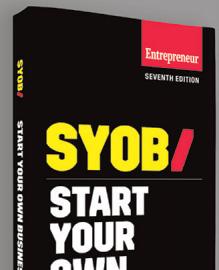





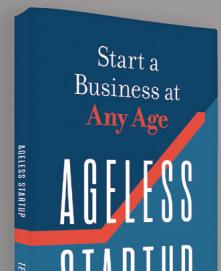



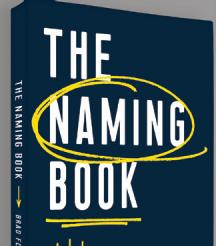







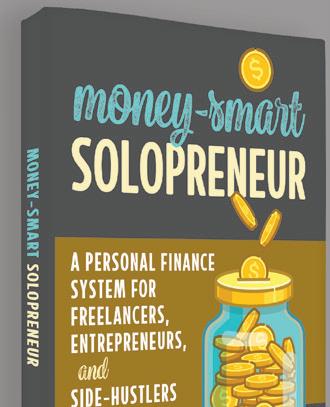









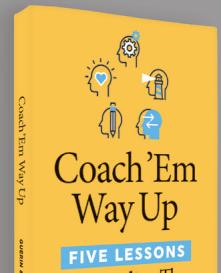

































































































































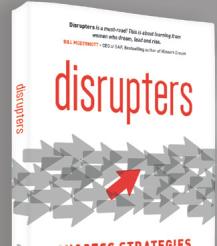





























Shelve Under
Whether establishing your operations or spreading the word, no matter what stage

Learn how to position yourself in the marketplace, attract new customers, and keep them coming back
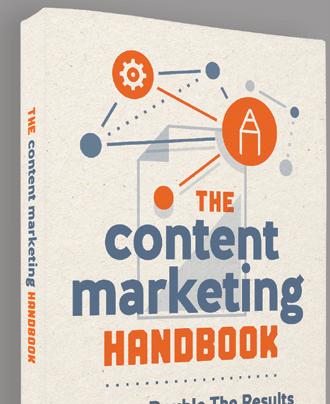



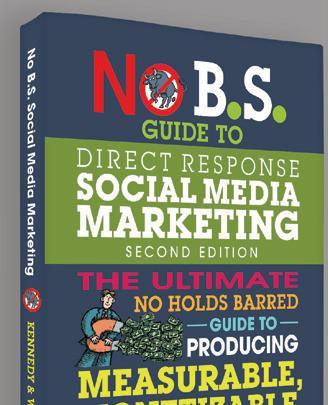









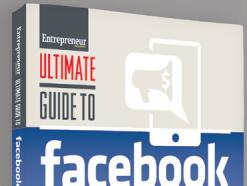















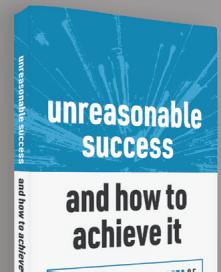


























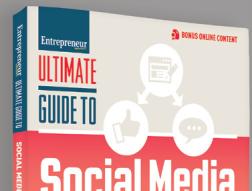














































































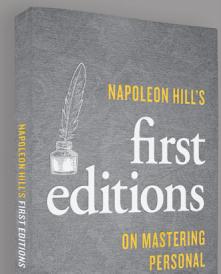


























































WE KNOW LESS THAN WE THINK
And that’s a good thing! The greatest lesson from the pandemic is this: Possibilities are endless.
by JASON FEIFER
e thought we knew best. Meetings had to happen with everyone in one room. Relationships were built on specific experiences. Work demanded certain specifications. Then a global pandemic proved us wrong.
WI first realized this in COVID-19’s early days. I have two young boys, and they developed an impressive intuition for whenever a camera or a microphone was on. I’d be making my podcast Build for Tomorrow, or giving a virtual keynote, or interviewing someone by Zoom, and they’d come bursting into the room. I’d try to wave them off, but it was pointless. They’d yell.
They’d jump. My 5-year-old beelined toward the camera while making farting noises. Then I switched strategies. I embraced the chaos. I started including their interruptions in my podcasts. I’d put a child on my lap and keep going with the keynote. If I was in the middle of an interview, I’d pause for some introductions. And that’s when I discovered something: These weren’t
interruptions. These were They were the moments people remembered fondly or emailed me about afterward. My noisy kids had become a professional asset.
I’ve heard a version of this story from so many people. For example, I recently spoke with OJO Labs founder John Berkowitz. When COVID-19 began, he was in the process of acquiring a Japanese-owned company. This normally would have meant flying to Japan for a marathon of meetings and late-night dinners, because Japanese business culture is so relationshiporiented. But once the world shut down, dinners were replaced with video chats.
“It was nice,” Berkowitz told me. “It shows your humanity. It’s hard to build a relationship in a boardroom, but when you are in your house, and your kid busts in and the internet goes out, we all get to know each other a little bit more intimately.”
The deal went through.
I even heard this from the founder of Zoom himself! I interviewed Eric Yuan for our December 2020 cover story… and of course, my 5-year-old ran over to ask me about his missing Beyblade toy. That got Eric and me talking about the impact Zoom calls have had on his team. “Employee engagement is better, actually,” he said. “Not only do I know more employees, but I also know their family members. It’s like a bigger family.”
Compare all this against our tech-focused fears from before. We used to obsess over our “screen time” and dismiss digital connectivity tools as subpar and less human. We thought video chat could never—under any
circumstances!—be better than an in-person meeting. And generations before us, people made similarly wild predictions about how their new tech would tear them apart. One of my favorites came from the famous composer John Philip Sousa, who in 1906 wrote a screed against the earliest record players, called phonographs. Among his concerns: He said mothers would stop singing to their children and instead just play the machine—and because babies imitate their mothers, the babies will “become simply human phonographs,” he wrote, “without soul or expression.”
It’s safe to say, Sousa was wrong. I play Spotify for my kids, but I also sing them lullabies, and they display a lot of soul and expression.
Today, just like in 1906, we thought we knew how change would impact us. We saw rules that couldn’t be broken, and a delicate balance that dare not be upset. Then, because of this pandemic, we were forced to do the things we once thought were impossible…and we discovered that they’re actually valuable.
What do we know? Not much. And let’s remember that. We like to put ourselves in a box, to assume everything worth knowing is inside our walls, but the real opportunities are beyond them. Entrepreneurs must exit that box and go stand on top of it. See the infinite possibilities! See solutions that others might see as threats, or crazy, or just downright impossible! And then, let’s show them what they’re missing.
Jason Feifer is the editor in chief of Entrepreneur.














